Hardware
GIGABYTE AORUS GTX 1080 Ti XTREME Edition 11G Graphics Card Review
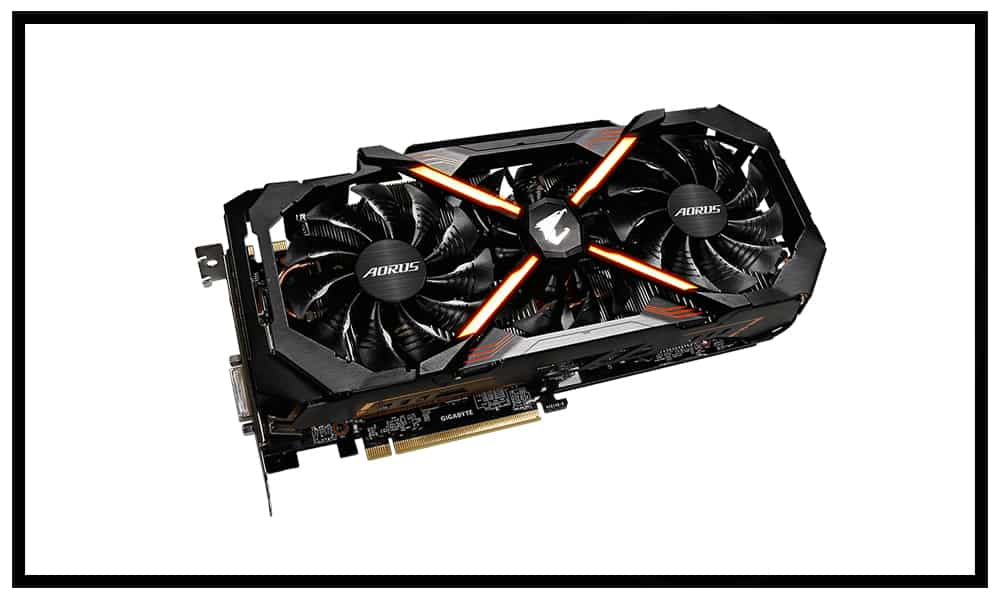
Introduction
The enthusiast community has been waiting for one card since the announcement of Pascal, and that card is the new GTX 1080 Ti. This was in hopes for a repeat of the performance gap between the Titan X and the previous Ti card. With the latest performance numbers, the GTX 1080 Ti proves it was a card worth waiting for. Since the Founders Edition 1080 Ti was released to the public, several companies have released their own versions of the 1080 Ti with custom PCBs and coolers. One of those companies seems to stand out more than the rest, and that company is GIGABYTE, and their new line of AORUS Motherboards and GPUs, which brings us to today’s review of the GIGABYTE AORUS GTX 1080 Ti. With a few different 1080 Ti SKUs, GIGABYTE has offerings from the Founders Edition card, up to their flagship AORUS GTX 1080 Ti XTREME Edition. In this review, we’ll be looking at the XTREME Edition and seeing how it compares to the AORUS GTX 1080 Ti Standard Edition. So, let’s get into the review.
About AORUS

“AORUS, a premium gaming brand powered by GIGABYTE, delivers a full spectrum of gaming products ranging from gaming laptops, motherboards, graphics cards, mechanical gaming keyboards, to many other gaming hardware and gears, offering the most extreme gaming experiences for enthusiasts worldwide!”
Founded in 2014, the AORUS hardware brand was originally designed for their relatively slim and light gaming laptops which includes the X3, X5, and X7 series. In January of 2017, at CES, GIGABYTE officially launched their lineup of AORUS branded graphics cards and motherboards.
GIGABYTE’s Take on the AORUS GTX 1080 Ti XTREME Edition
“AORUS provides the all-around cooling solution for all key components of the graphics card. We take care not only GPU but also VRAM and MOSFET, to ensure a stable overclock operation and longer life. On the front side, the large copper base plate dissipates the most heat from the GPU and VRAM. On the back side, the copper back plate dissipates the heat from the GPU back side. All other key components are taken care of very well by the WINDFORCE cooling module. AORUS ensures the customer a better cooling solution in many ways.”
AORUS graphics cards are crafted for perfection in pursuit of the ultimate graphics experience for gaming enthusiasts. Based on the revolutionary NVIDIA® Pascal™ GPU architecture, AORUS graphics cards bring you an incredible gaming experience.
- GPU Gauntlet™ Sorting
- Pascal-powered graphics card give you superior performance and power efficiency
- Support up to 8K display @60Hz
- Outstanding performance for Virtual Reality gaming
- Powered by GeForce® GTX 1080 Ti
- Integrated with 11GB GDDR5X 352-bit memory interface
- WINDFORCE Stack 3X 100mm Fan Cooling System
- Advanced Copper Back Plate Cooling
- AORUS VR Link provides the best VR experience
- RGB Fusion – 16.8M customizable color lighting
- Metal Back Plate with RGB AORUS LOGO Illumination
- Built for Extreme Overclocking 12+2 Power Phases
- 4 Years Warranty
Features & Specifications
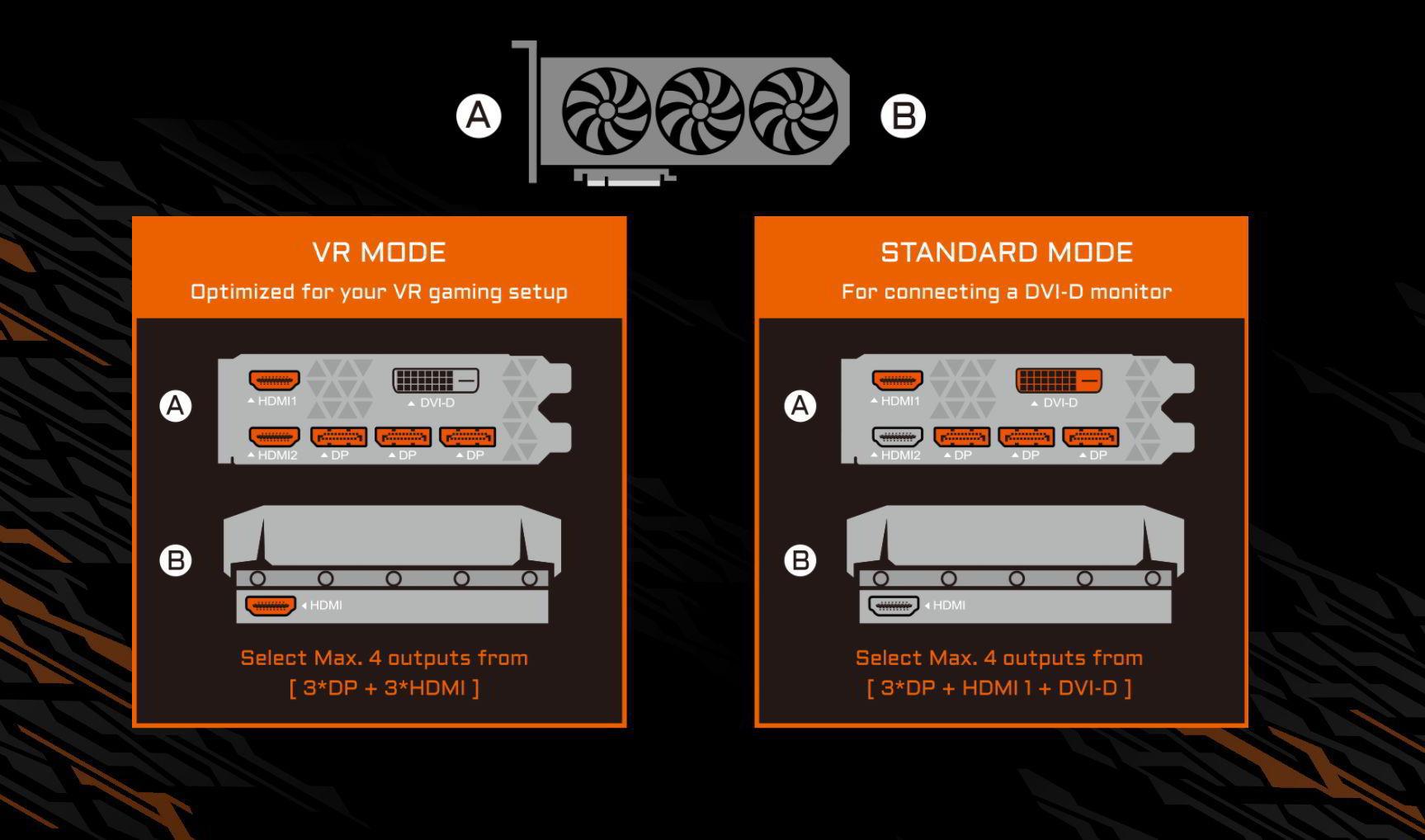
AORUS VR Link features 1 extra front-facing and 2 rear HDMI ports, letting you connect a VR device and up to 2 HDMI monitors at the same time without having to swap cables.
| Product Specifications | |
|---|---|
| Graphics Processing | GeForce GTX 1080 Ti |
| Core Clock | Boost: 1746 MHz / Base: 1632 MHz in OC mode Boost: 1721 MHz / Base: 1607 MHz in Gaming mode (Reference Card Boost: 1582 MHz / Base: 1480 MHz) |
| Memory Clock | OC mode: 11448 MHz Gaming mode: 11232 MHz |
| Memory Size | 11 GB |
| Memory Type | GDDR5X |
| Memory Bus | 352 bit |
| Card Bus | PCI-E 3.0 x 16 |
| Output | Dual-link DVI-D *1 HDMI-2.0b*3 (Max Resolution: 4096×2160 @60 Hz) Display Port-1.4 *3 (Max Resolution: 7680×4320 @60 Hz) (VR mode: DP*3, HDMI*3) (Standard mode: Dual-link DVI-D*1, DP1.4*3, HDMI 2.0b*1) |
| Digital max resolution | 7680×4320 px |
| Multi-view | 4 |
| Card dimensions | H=55 L=293 W=142 mm |
| PCB Form | ATX |
| DirectX | DirectX 12 API feature level 12_1 |
| OpenGL | 4.5 |
| Recommended PSU | 600W |
| Power Connectors | 8 pin x2 |
A Bit About Pascal

This is a die shot of a full-fledged GP100. The 1080 Ti is based on the GP102 GPU.
Pascal is designed to offer the highest performance for deep learning and other compute performance. Pascal is NVIDIA’s successor to their 28 NM Maxwell Architecture. The Pascal microarchitecture uses the 16 nanometer FinFET manufacturing process from TSMC, the Taiwan Semiconductor Manufacturing Company. With 150 billion transistors, Pascal is the world’s largest FinFET Chip ever built. Delivering over 5 Teraflops of double precision performance, Pascal is also the most powerful architecture ever inside of a GPU.
Packaging & Unboxing
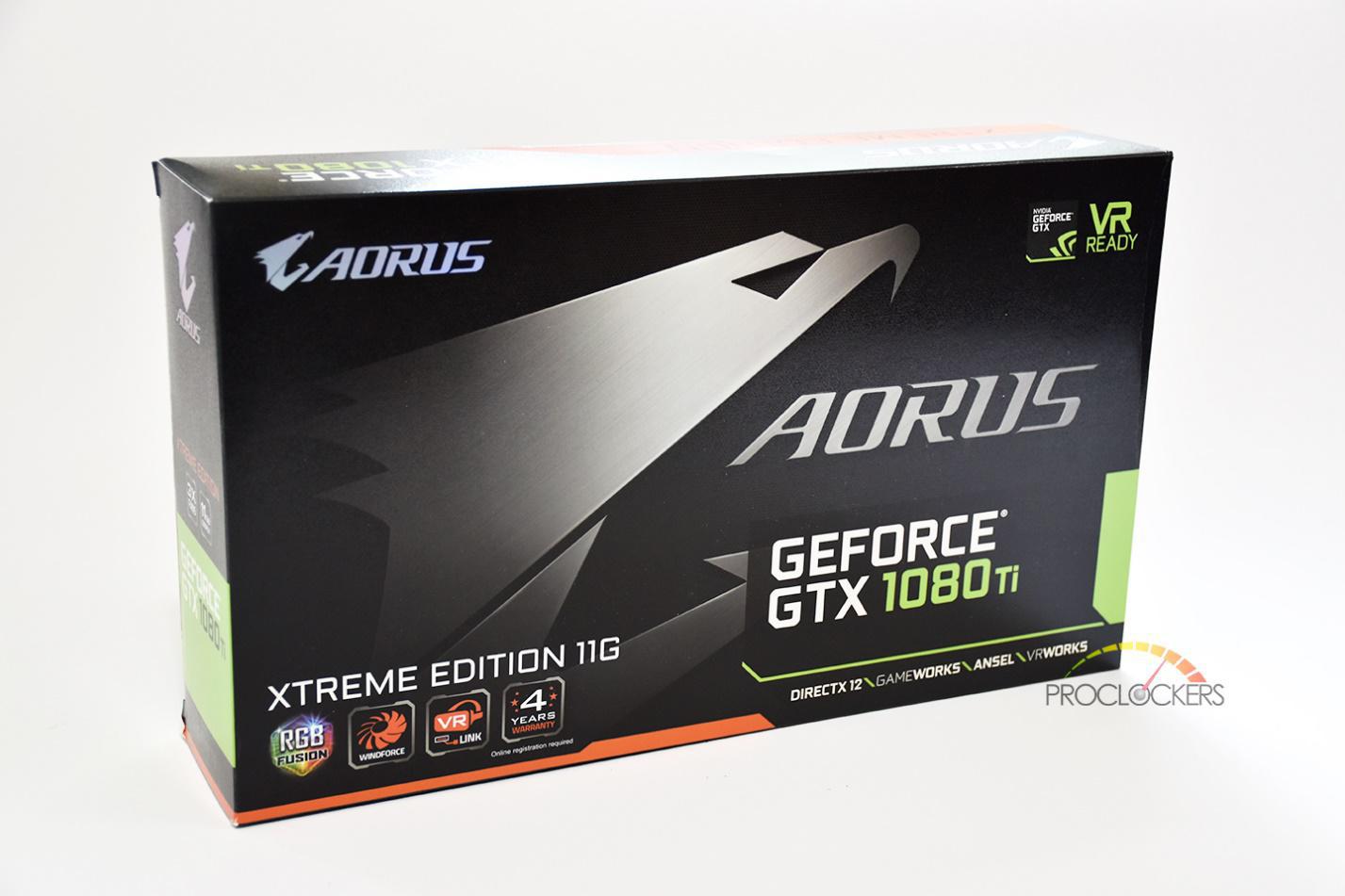
The front of the AORUS GTX 1080 Ti box has the AORUS logo in the top left corner. Just below, is the falcon head logo, taking up about half the front of the box. To the right of the falcon head, is the AORUS logo. On the bottom left, we see the XTREME EDITION 11G branding with a few of the features of the card listed, such as RGB Fusion support and the four-year warranty on the card. To the right, we have the GEFORCE GTX 1080 Ti branding with a list of NVIDIA’s features. These features include DX12 support, NVIDIA Game Works, ANSEL, and VR Works.
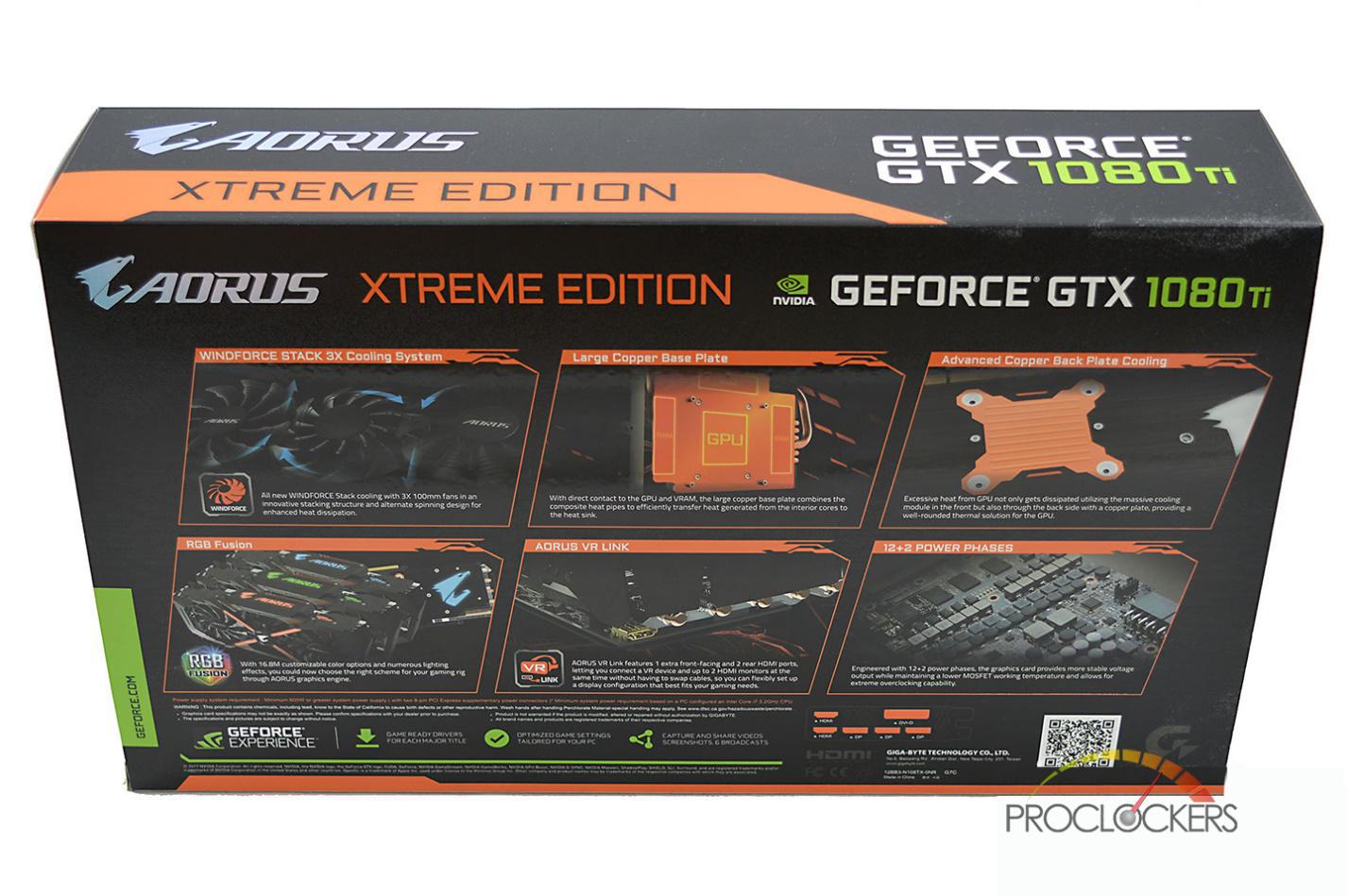
The rear of the box has the AORUS logo on the top left, with the XTREME EDITION branding in the center. To the right are the GEFORCE logo and GTX 1080 Ti branding. Also on the back of the box, there are several depictions of some of the main features of the AORUS GTX 1080 Ti. Some of the features include the WINDFORCE STACK 3X Cooling System, the Advanced Copper Back Plate Cooling, a large copper cold plate, AORUS VR Link, RGB Fusion support and the 12 + 2 phase power delivery. The top of the box also has the AORUS logo, with XTREME EDITION branding, as well as the GEFORCE GTX logo and 1080 Ti branding.
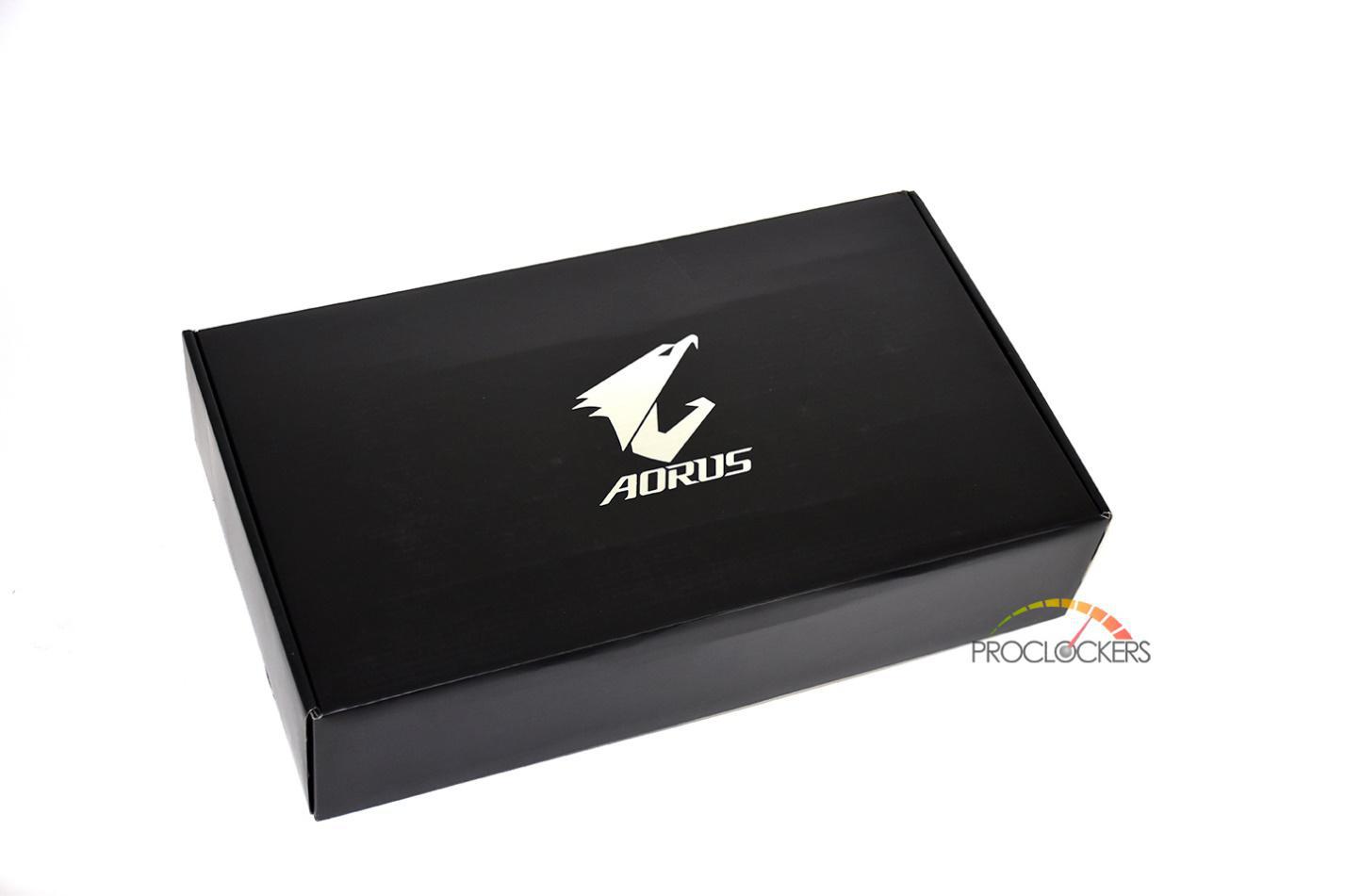
The inner box is all black, with the AORUS Falcon head displayed in the center of the box. When the box is opened, we find an AORUS branded envelope that holds the literature, driver disk, and AORUS Falcon head metal case badge. Under the envelope is a sheet of soft foam that covers the card.
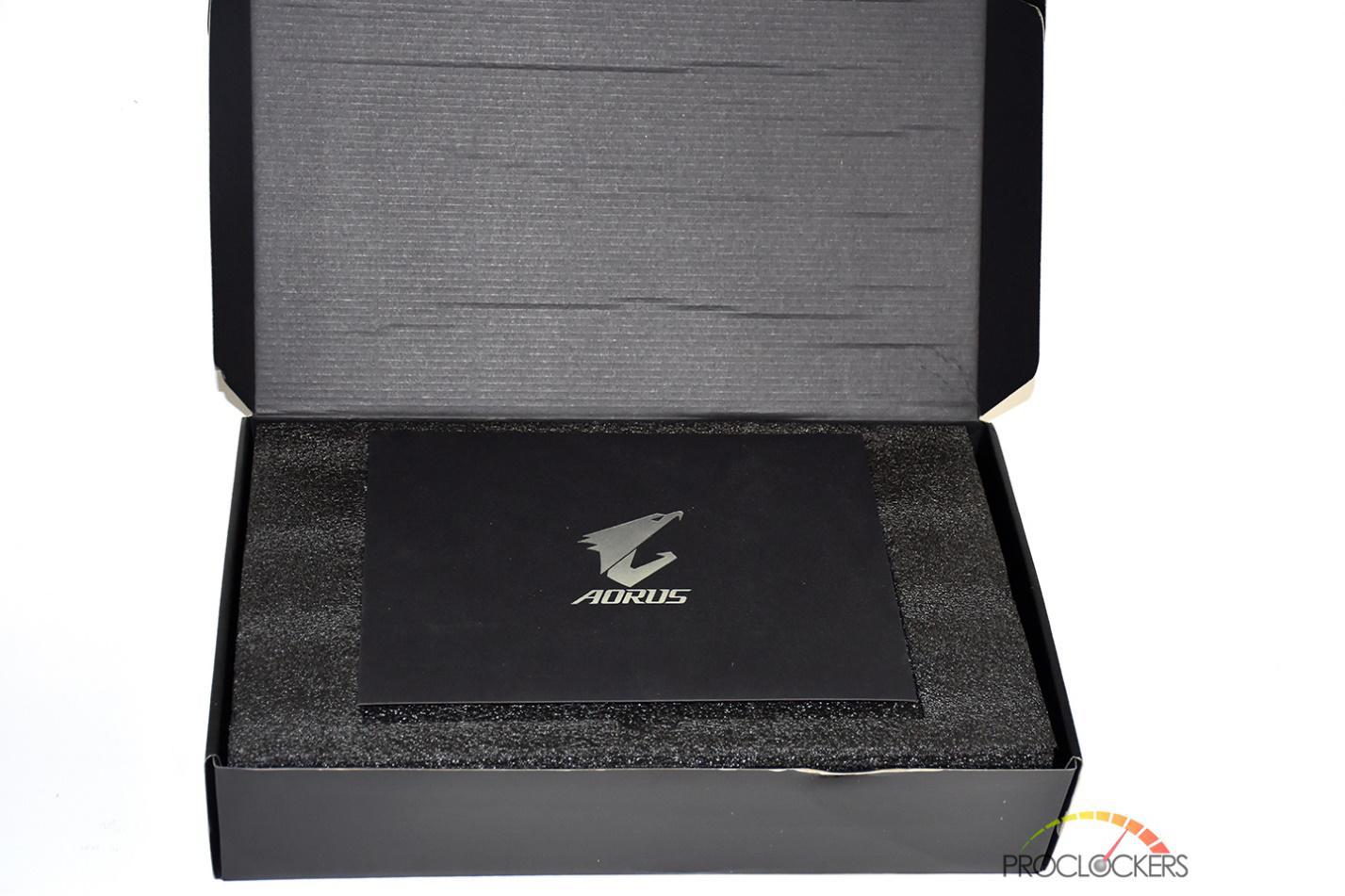
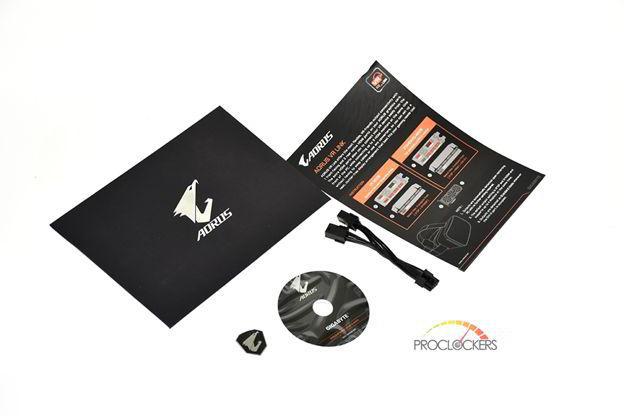

The card comes with a dual Molex to 8-pin adapter. This is in case your power supply doesn’t have two 8-pin PCIe connectors. Good in a pinch, but not recommended for long term use. The card comes encased in soft foam and wrapped in an anti-static bag. I love the use of soft foam, much more than the plastic clam-shell packages you see elsewhere.
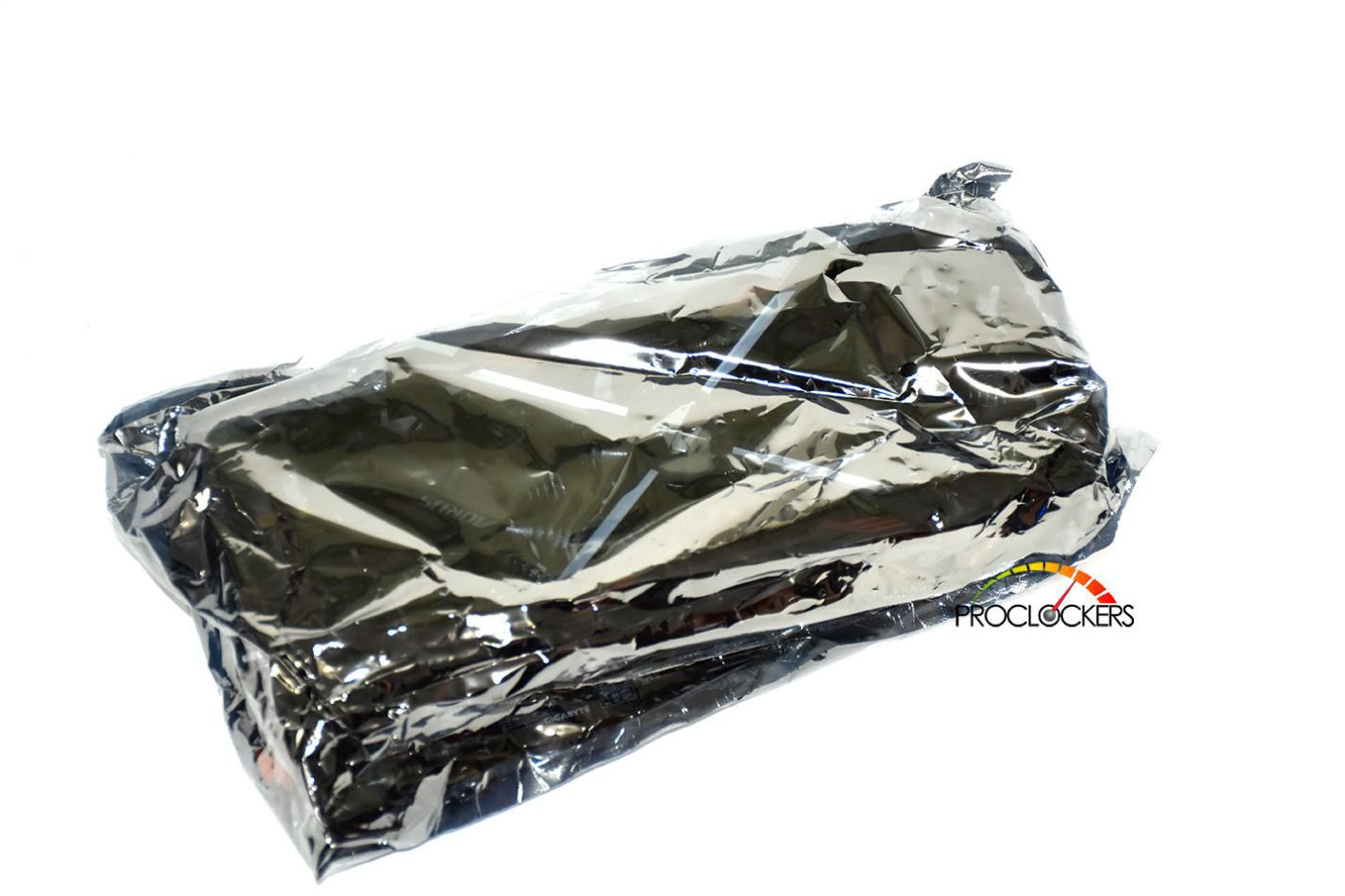
A Closer Look
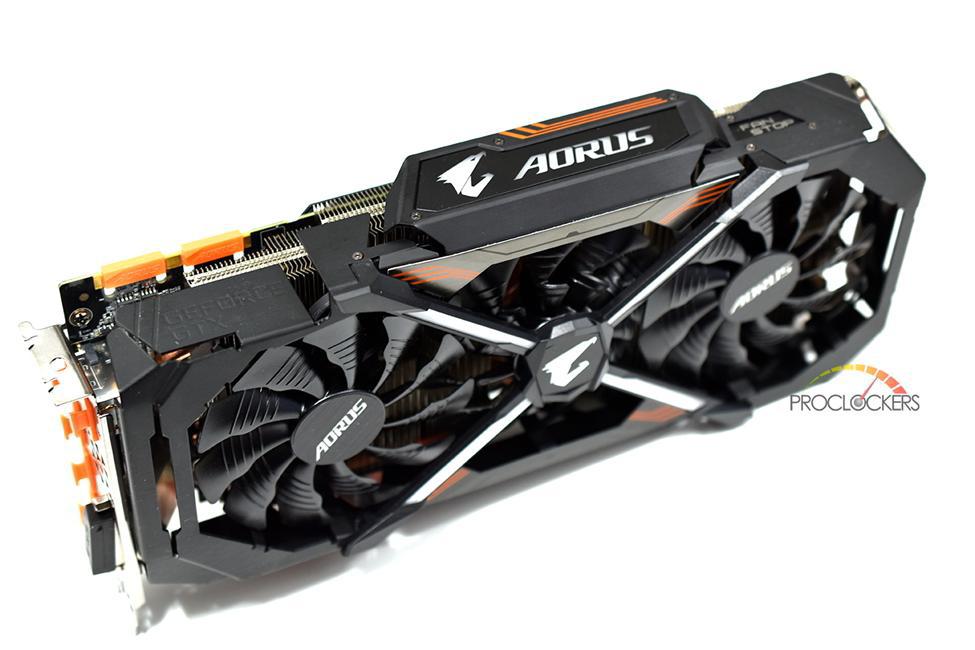
The AORUS GTX 1080 Ti XTREME EDITION has three RGB lighting zones. The first being the X over the center of the WINDFORCE STACK 3X Cooler. The second RGB zone is the AORUS logo on the side of the card. The last RGB zone is the large FALCON head logo on the backplate.

The AORUS logo on the side of the card is one of the RGB zones on the AORUS GTX 1080 Ti. This is true for both models.
The AORUS GTX 1080 Ti is a beautiful card. It’s WINDFORCE 3x 100mm, stacked fan design allows for greater and smoother airflow. The three 100mm fans provide more heatsink coverage than 3x 80mm fans, and perform on average 10% better. The middle fan spins in the reverse direction of the two end fans. This helps to optimize the airflow to dissipate the heat faster for higher performance at a lower temperature. The airflow is split by the triangle fan edge, and forced through the 3D stripe curve on the fan surface, increasing the airflow by up to 23% more than traditional fans.
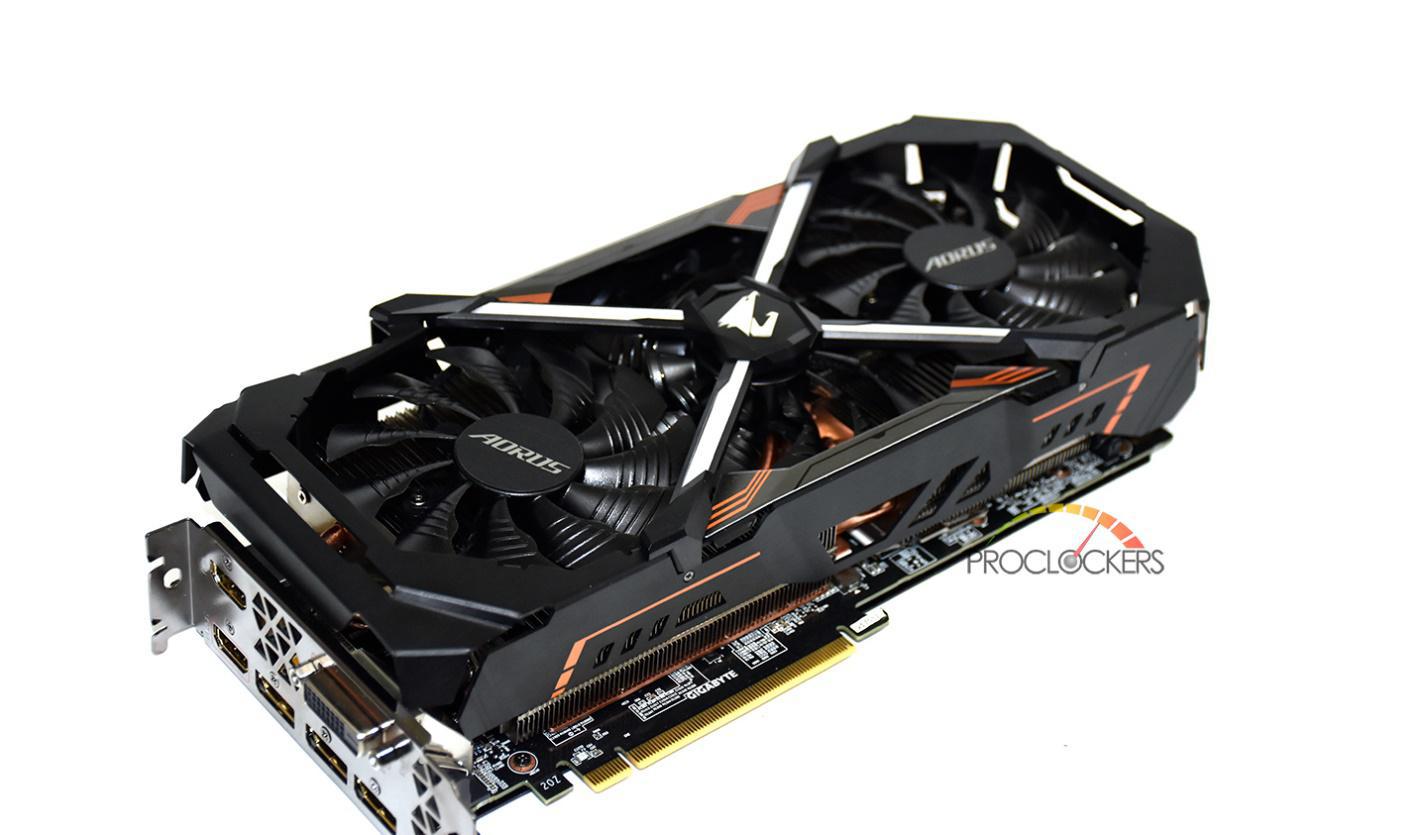
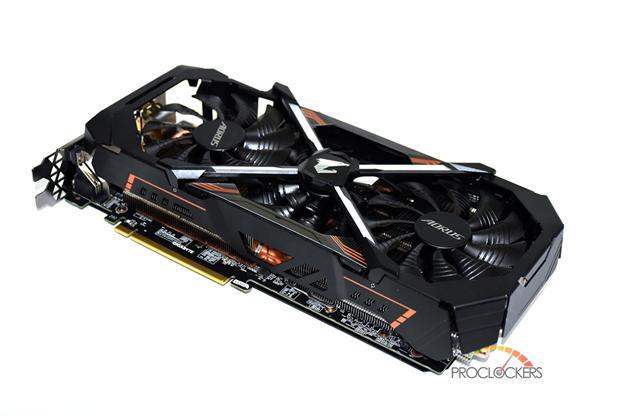
The AORUS GTX 1080 Ti is a 2 ½ slot GPU. This is due to the massive heatsink that sits under the 3 100mm WINDFORCE fans. Directly over the center fan is the AORUS Falcon head logo. RGB lighting form an X over the center fan, with the AORUS logo in the dead center of the RGB X. Unlike other board partner cards, the shroud on the AORUS GTX 1080 Ti for both the regular and the XTREME Edition is made up of aluminum, not plastic. This is a great feature and hints toward the overall build quality of the card.
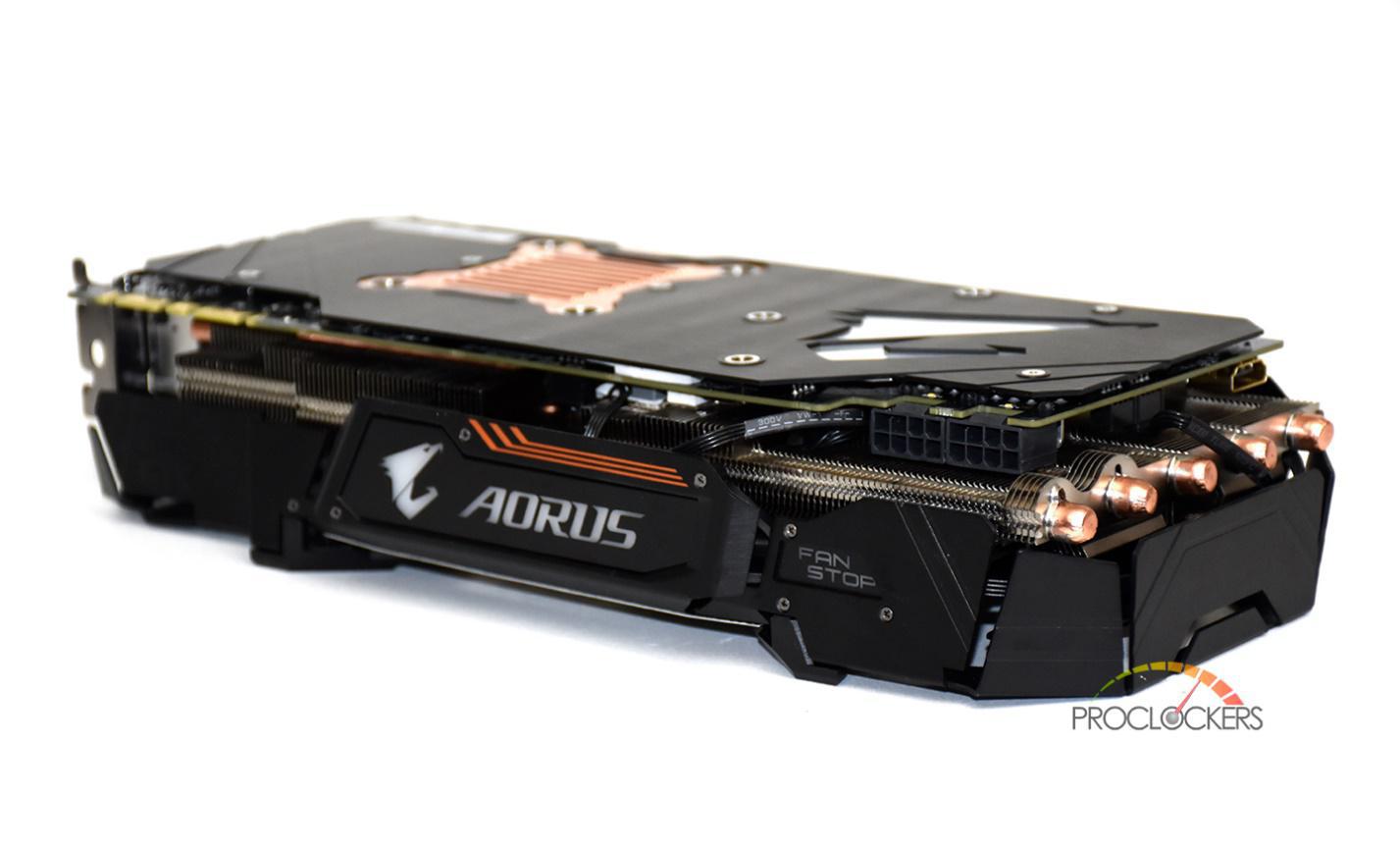
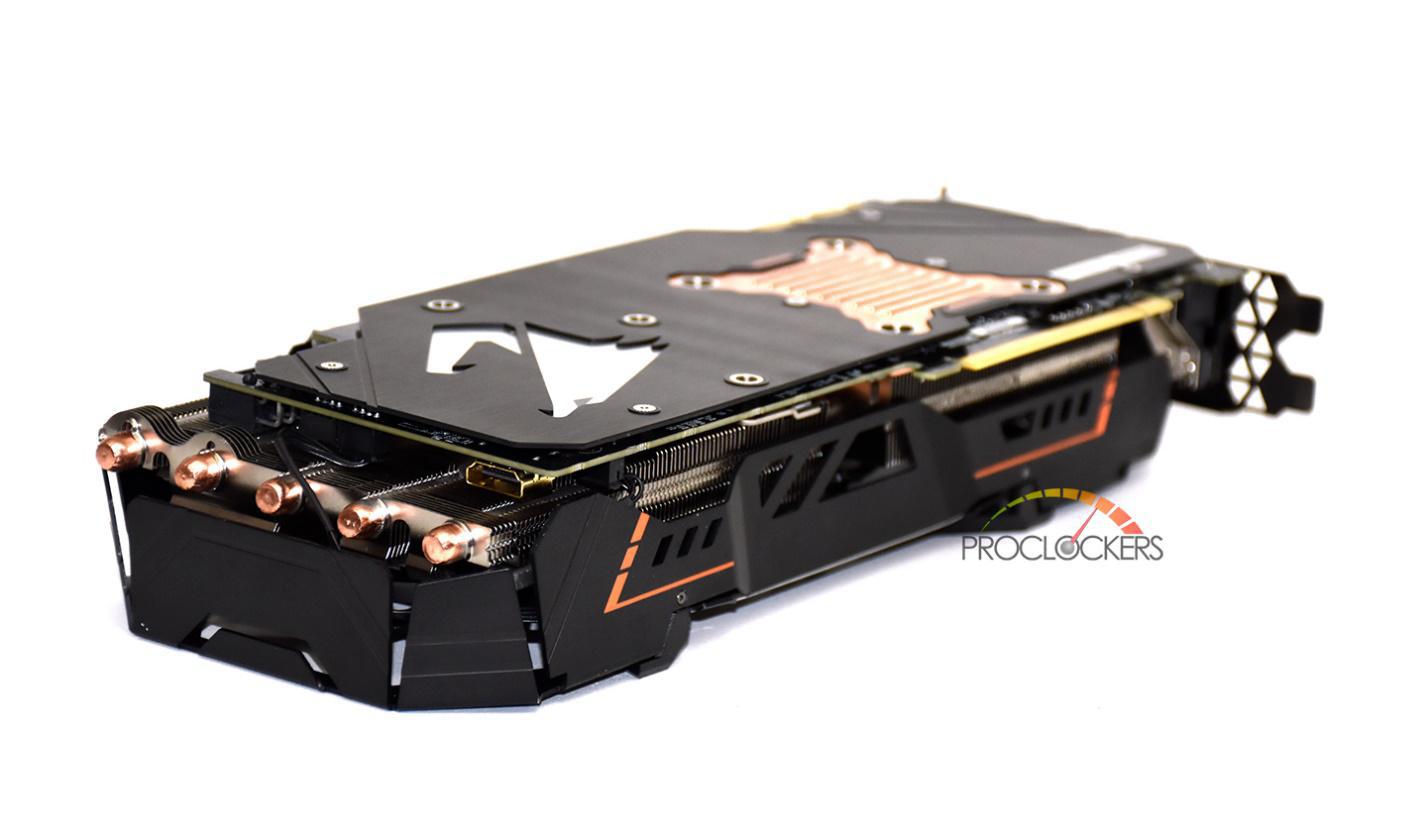
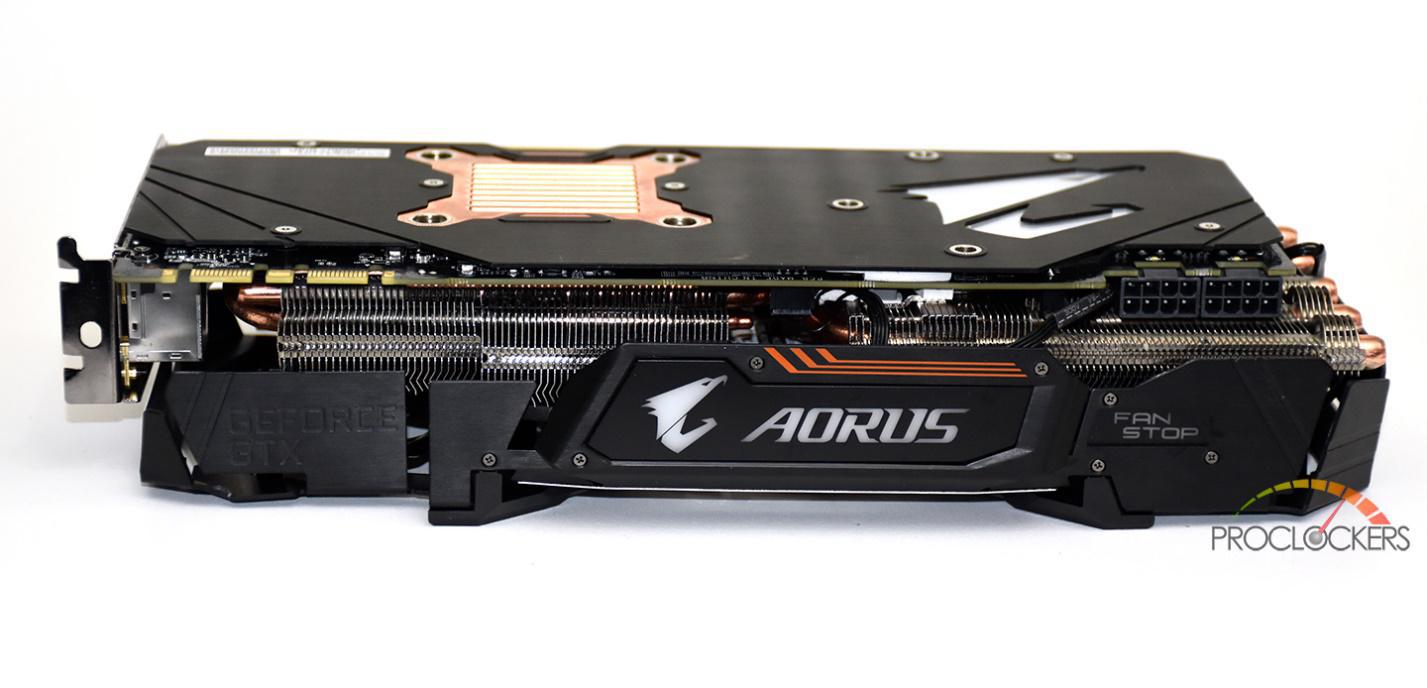
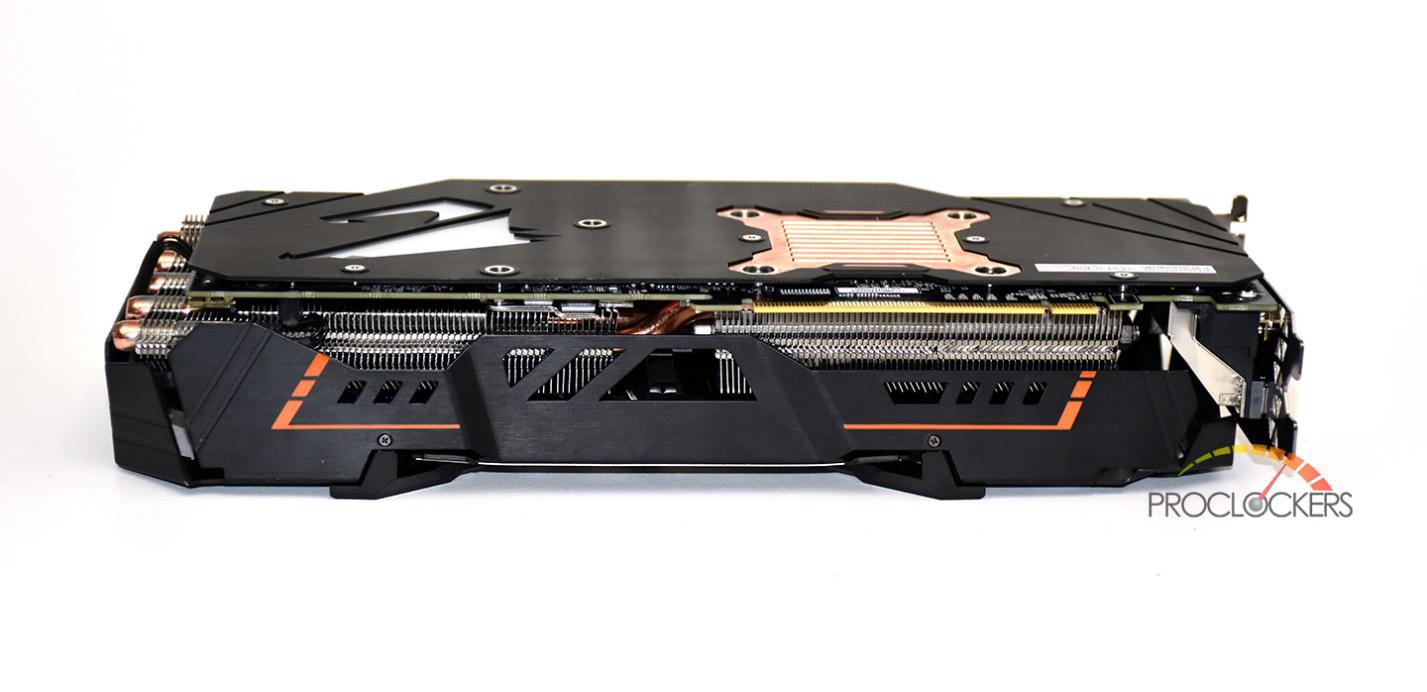


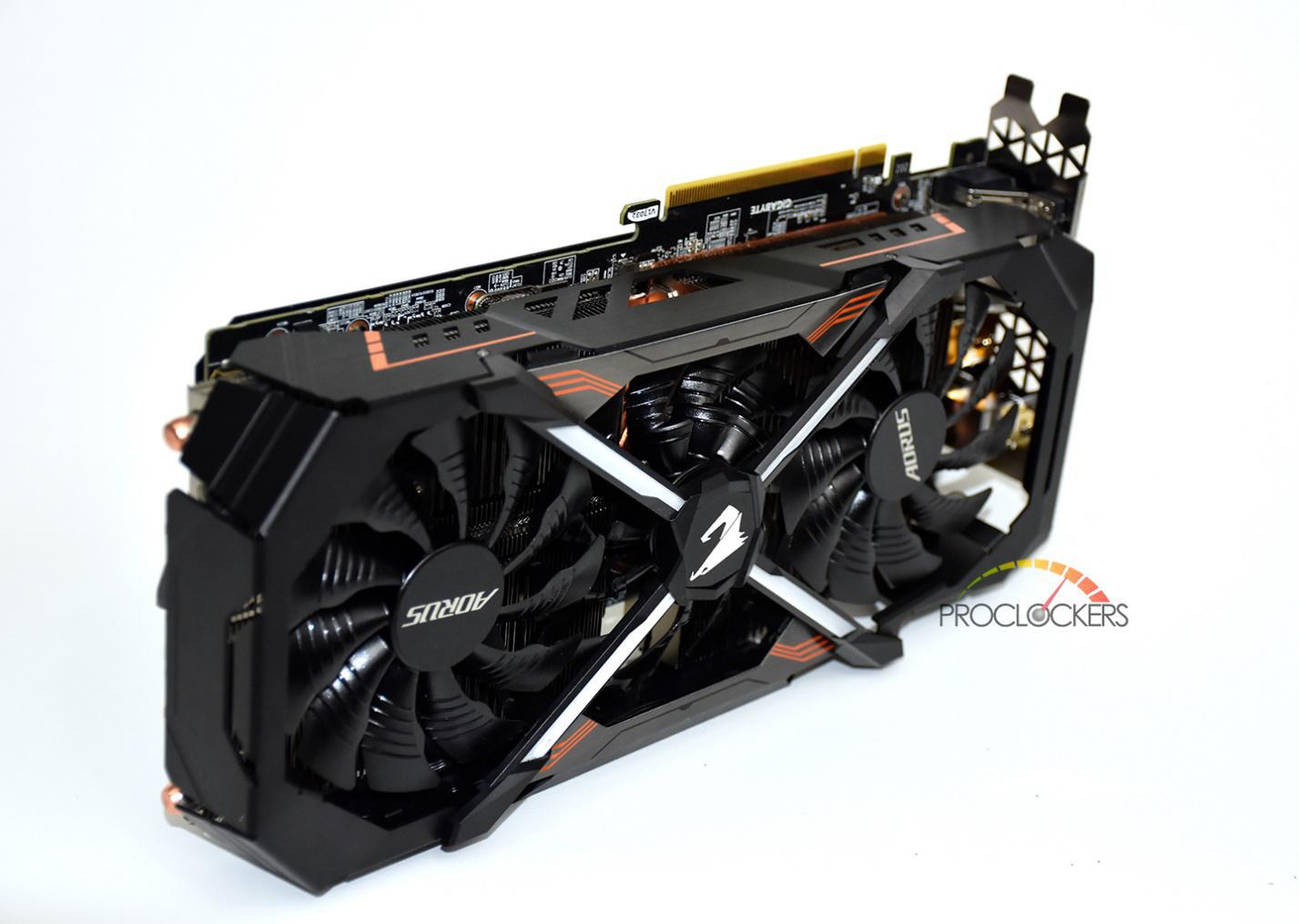
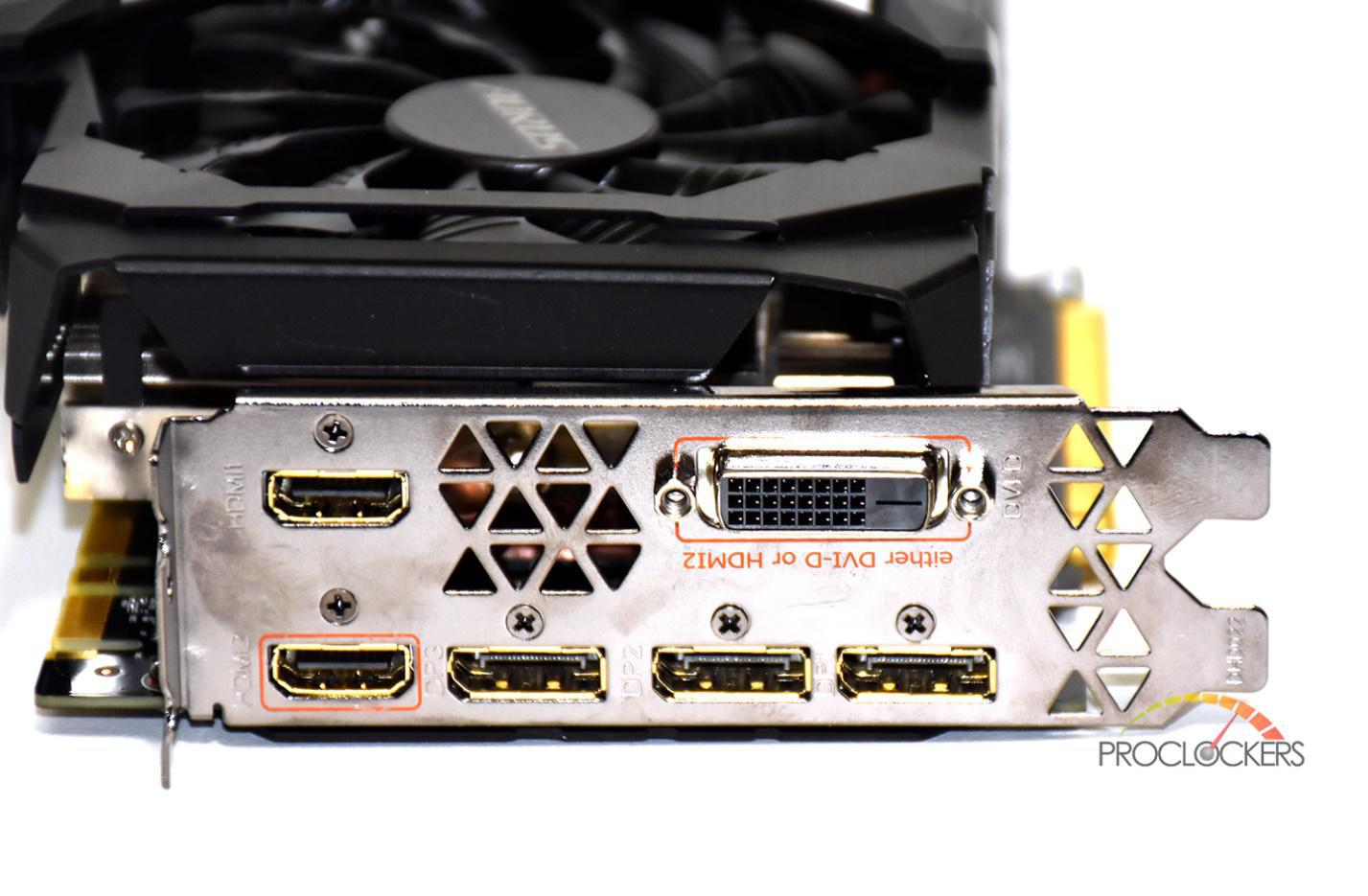
The AORUS GTX 1080 Ti has 3 HDMI ports, with two in the front of the card and one on the rear. The card also has 3 x DisplayPorts and a single DVI-D port that can be converted to HDMI. AORUS VR Link features 1 extra front-facing and 2 rear HDMI ports, letting you connect a VR device and up to 2 HDMI monitors at the same time without having to swap cables.

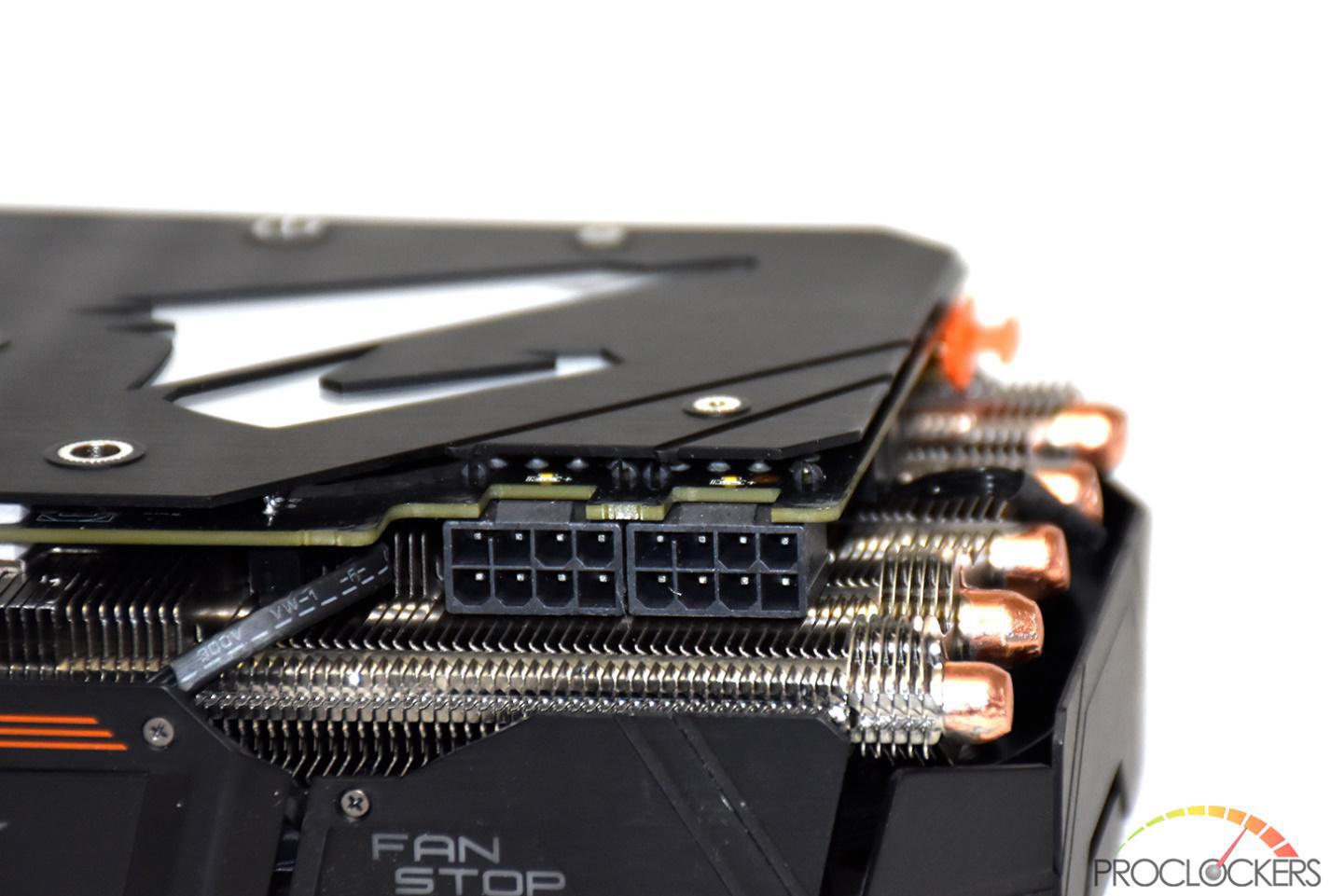
The AORUS GTX 1080 Ti has two 8-pin power connectors for both the Standard and the XTREME Edition.
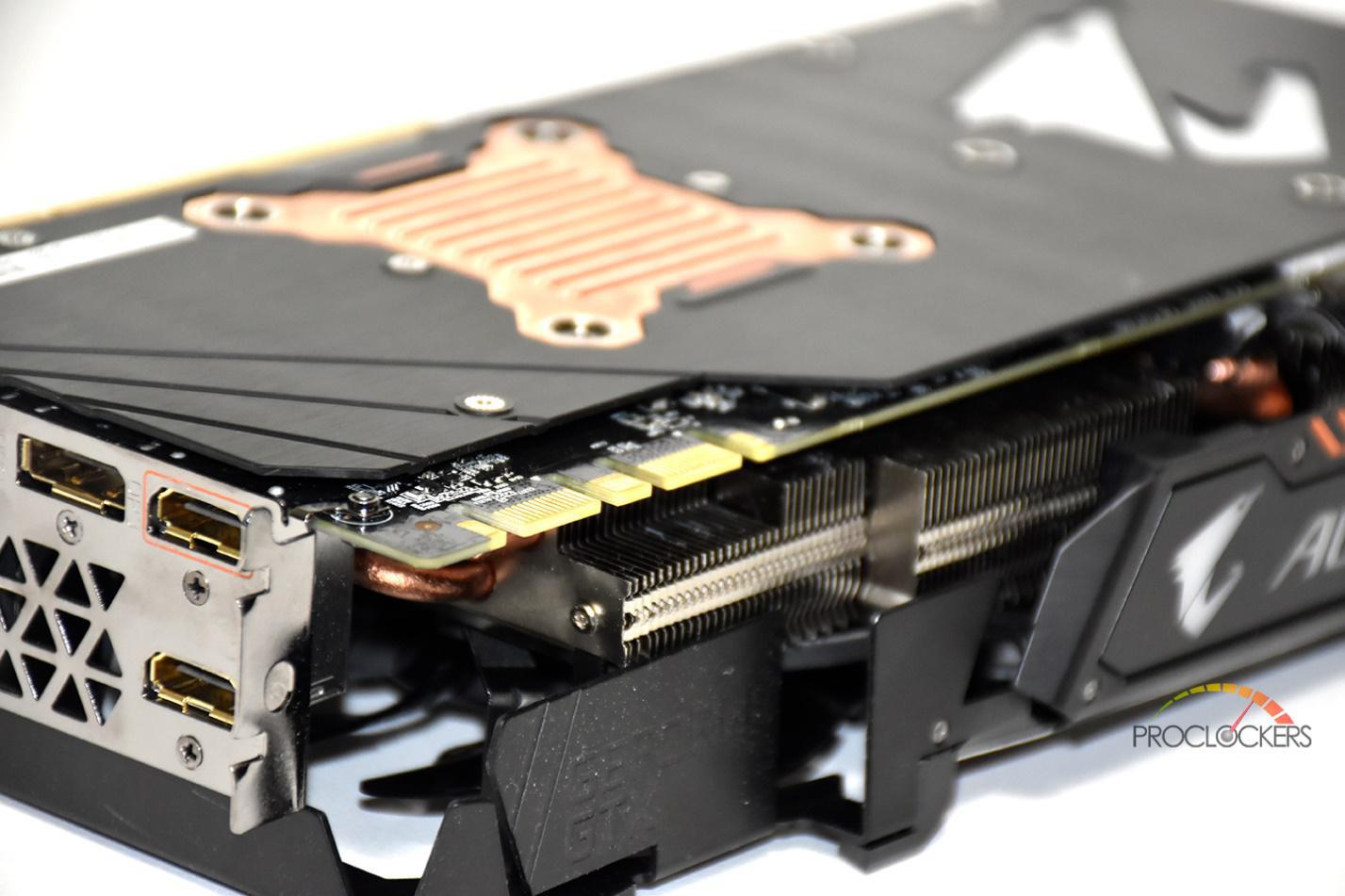
The AORUS GTX 1080 Ti officially supports 2-way SLI. However, synthetic benchmarks such as Fire Strike and Time Spy do support 3 and 4-way SLI.

Here is the copper block on the back plate of the XTREME Edition AORUS GTX 1080 Ti. The direction of the stripes on the backplate is not just for aesthetics. The direction of the lines on the copper plate will help to increase the cooling performance by directing airflow across the back of the card.
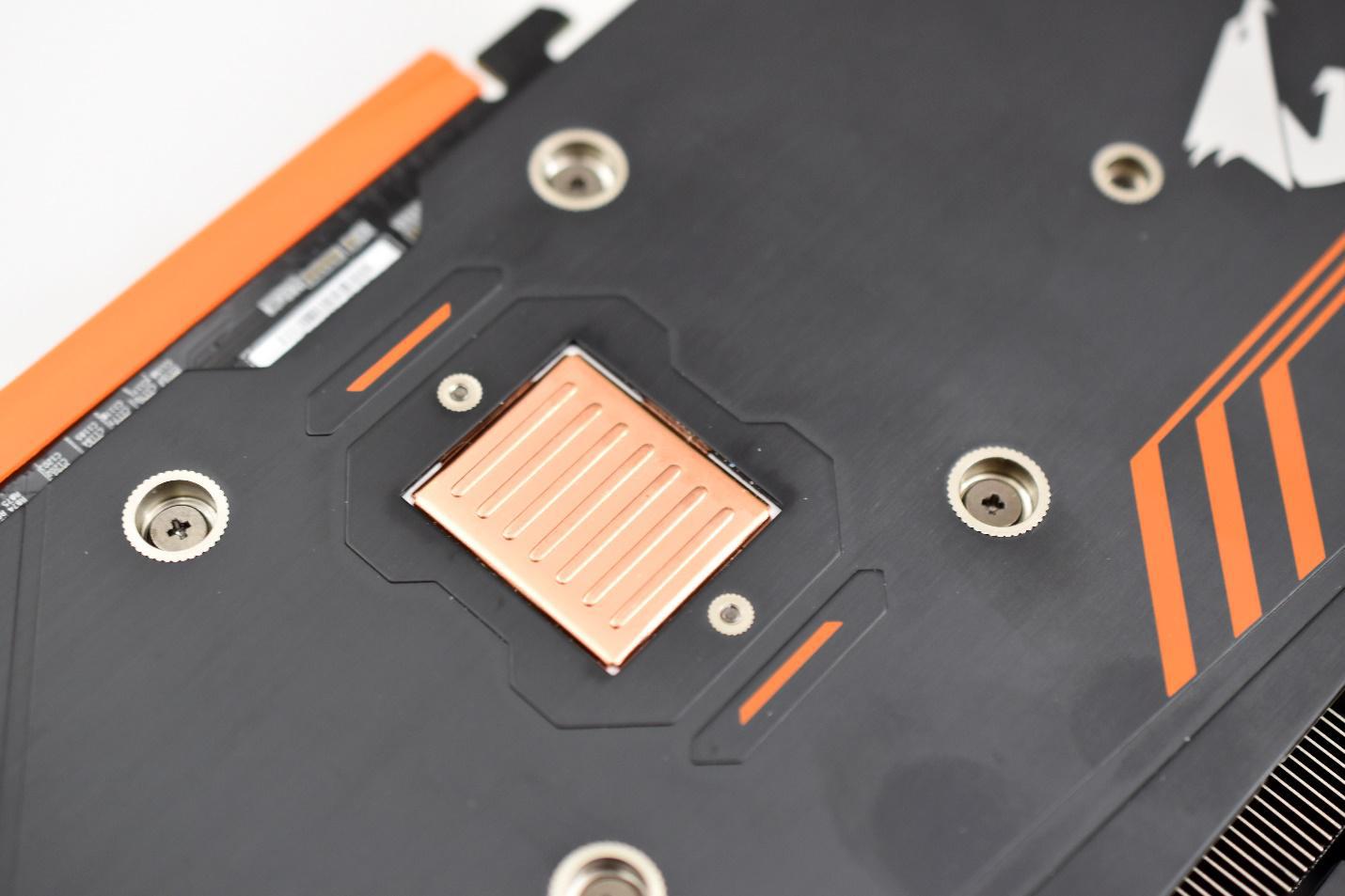
Here is the copper block on the back plate of the AORUS GTX 1080 Ti, which has the same basic function as the copper plate on the XTREME EDITION 1080 Ti. The copper plate helps to direct air flow.
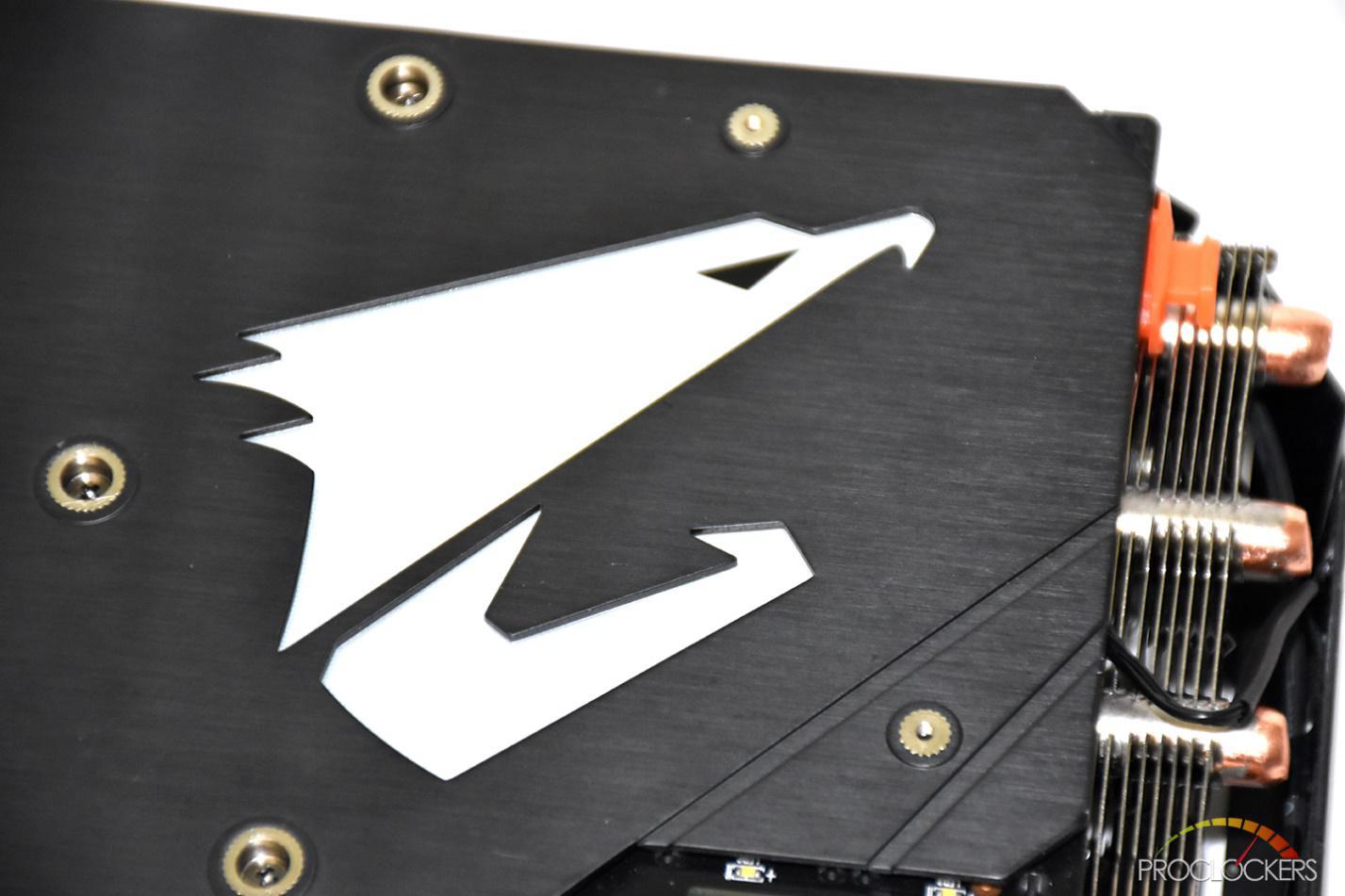
On the XTREME Edition AORUS GTX 1080 Ti, the AORUS Falcon head is RGB backlit and takes up a third of the back plate.
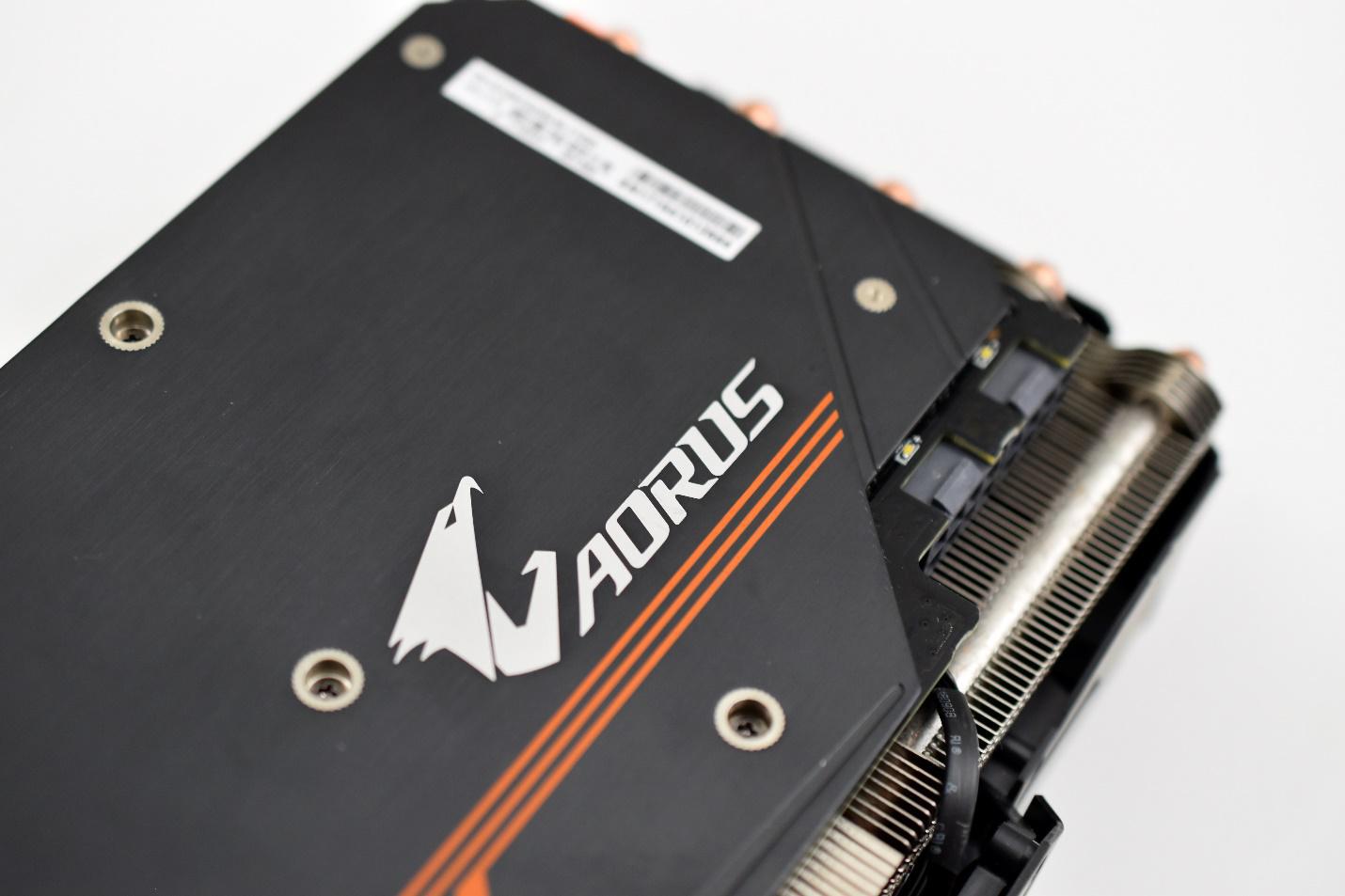
The AORUS logo on the regular AORUS GTX 1080 Ti is much smaller than on the XTREME EDITION, and it’s also printed, not RGB.
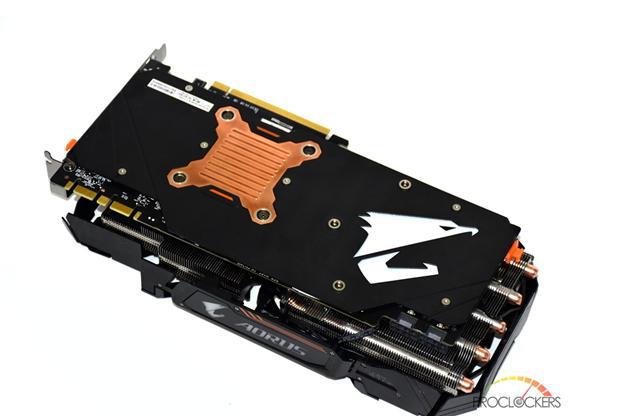
The AORUS logo looks great on the back plate and the large copper plate adds to the aesthetic.
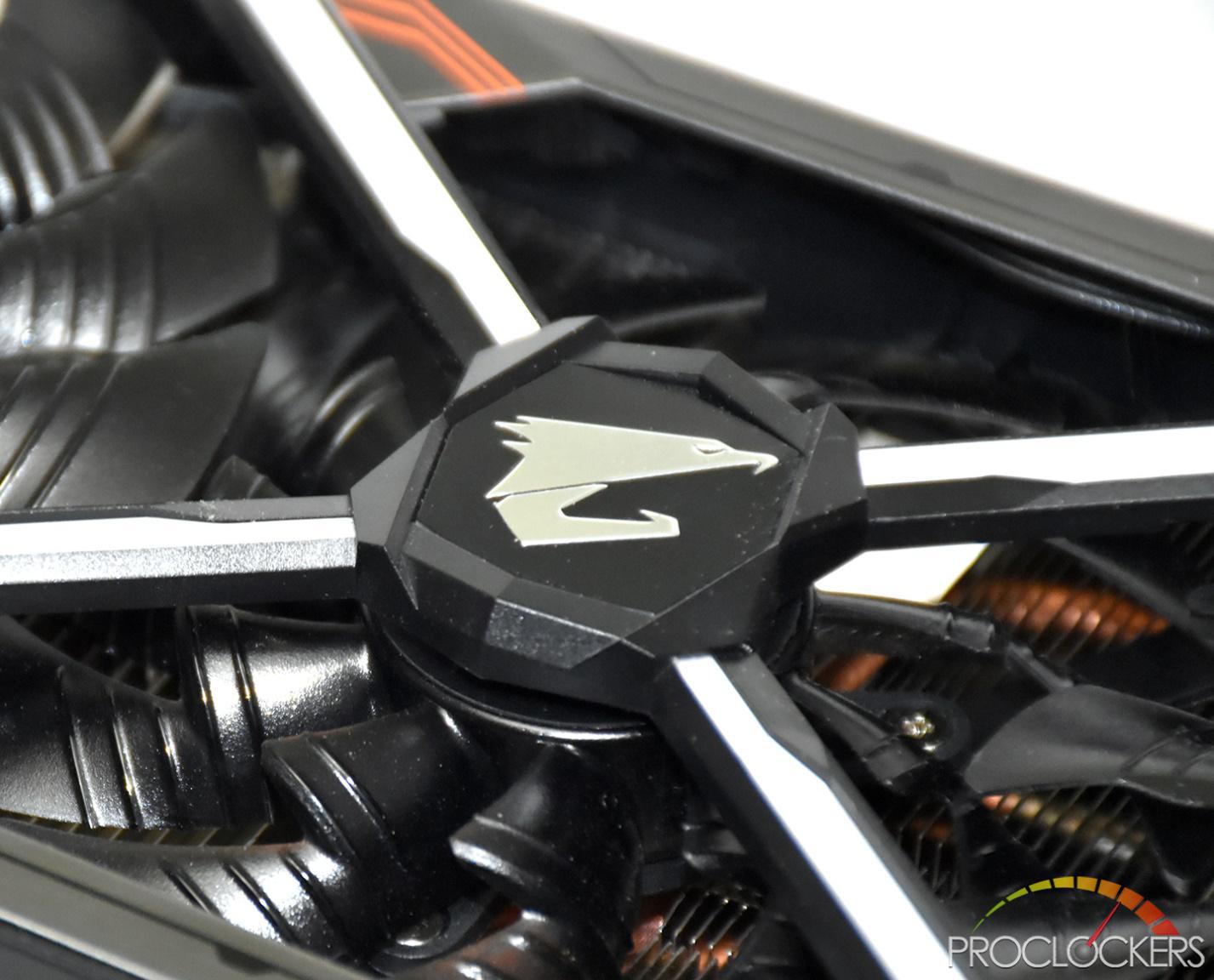
The AORUS logo is located on several spots on the card, including the side, back plate and on the center of the cooler, as seen in this photo.

When compared to sleeve bearings, the double ball bearing structure of the WINDFORCE fans have better heat endurance. All AORUS branded graphics cards are equipped with 3D-Active Fan. The fans will remain off when the GPU is under a set load or temperature for low power gaming. The FAN STOP LED will indicate when the fans have stopped.
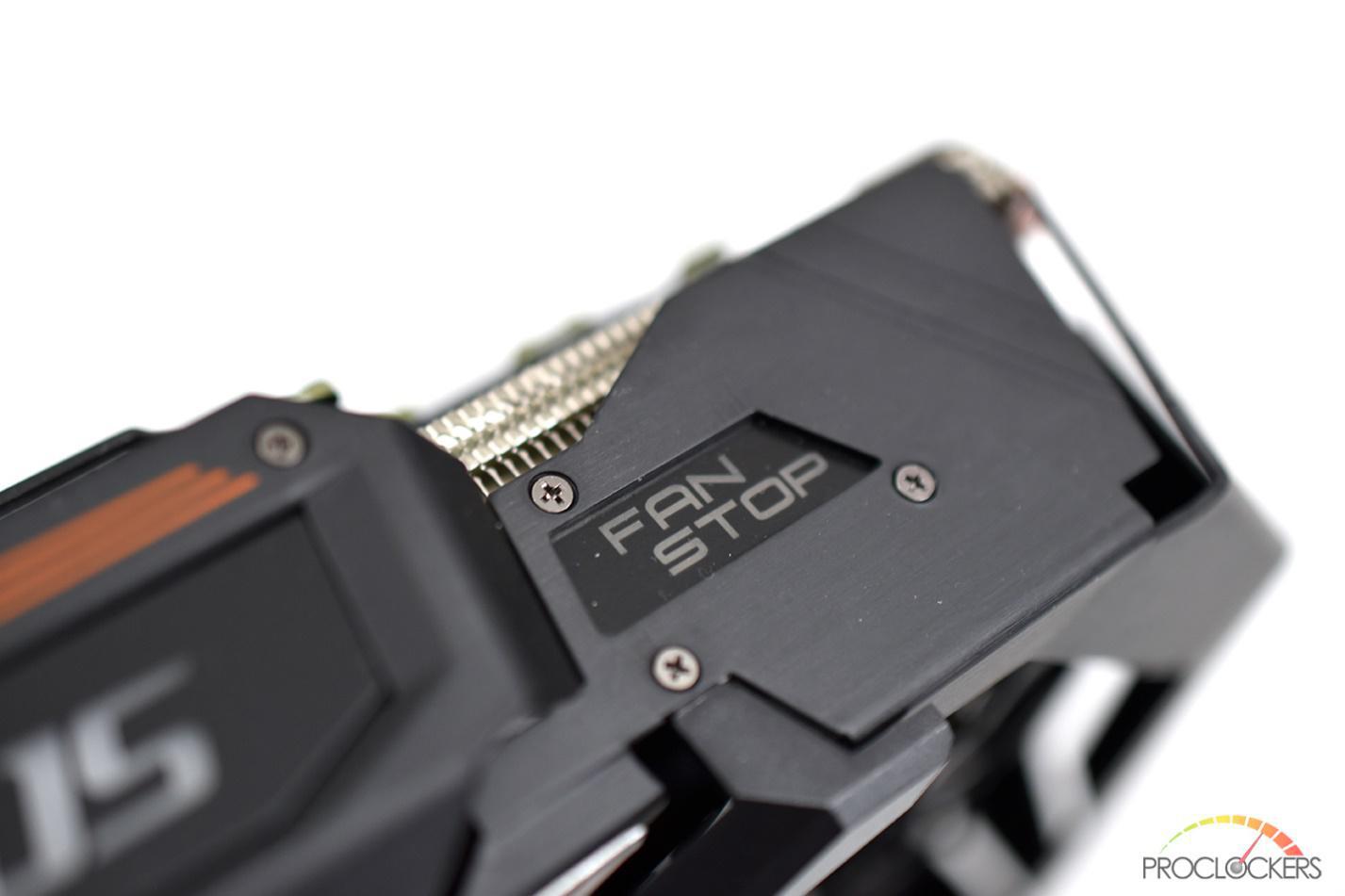
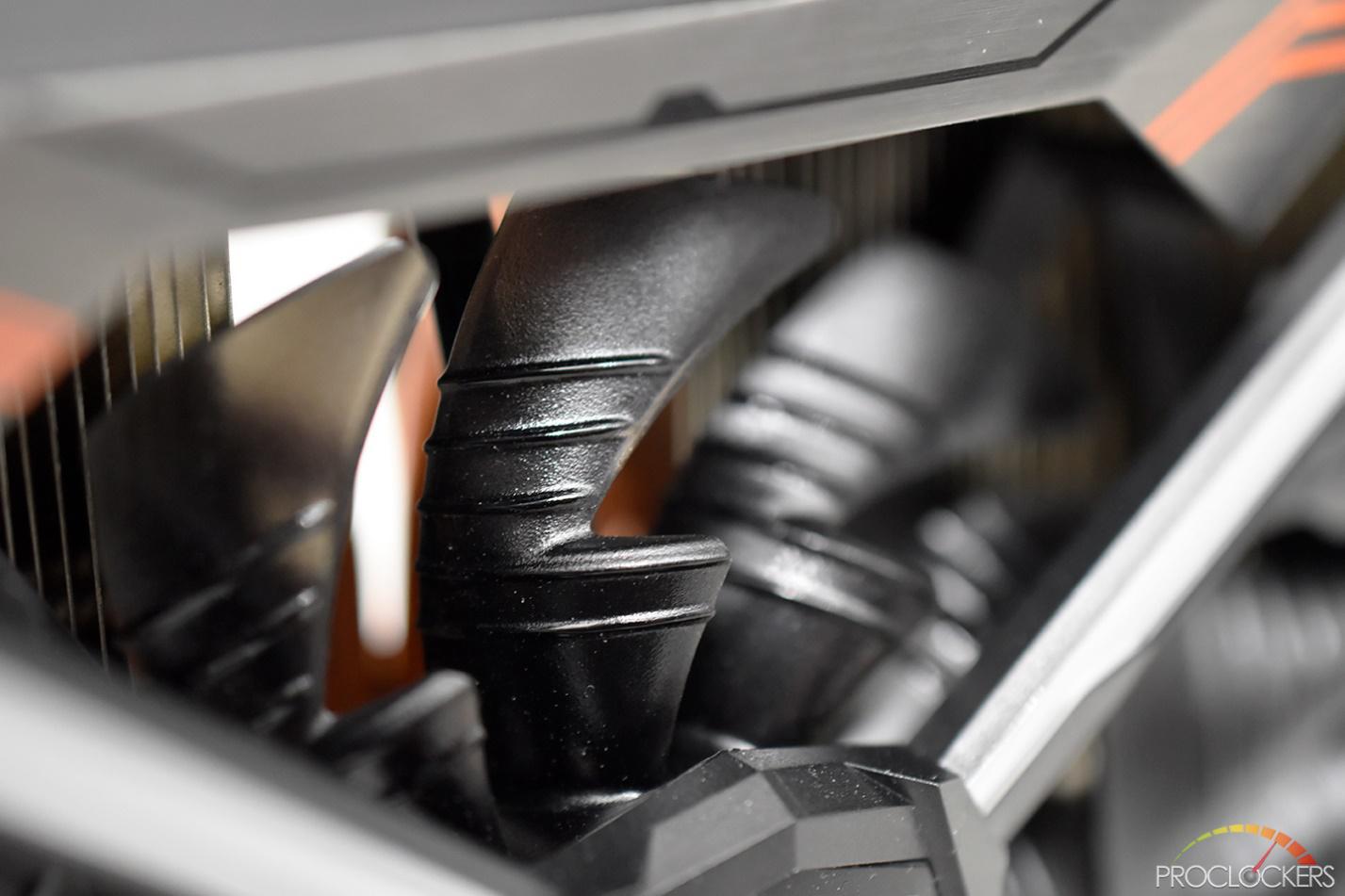

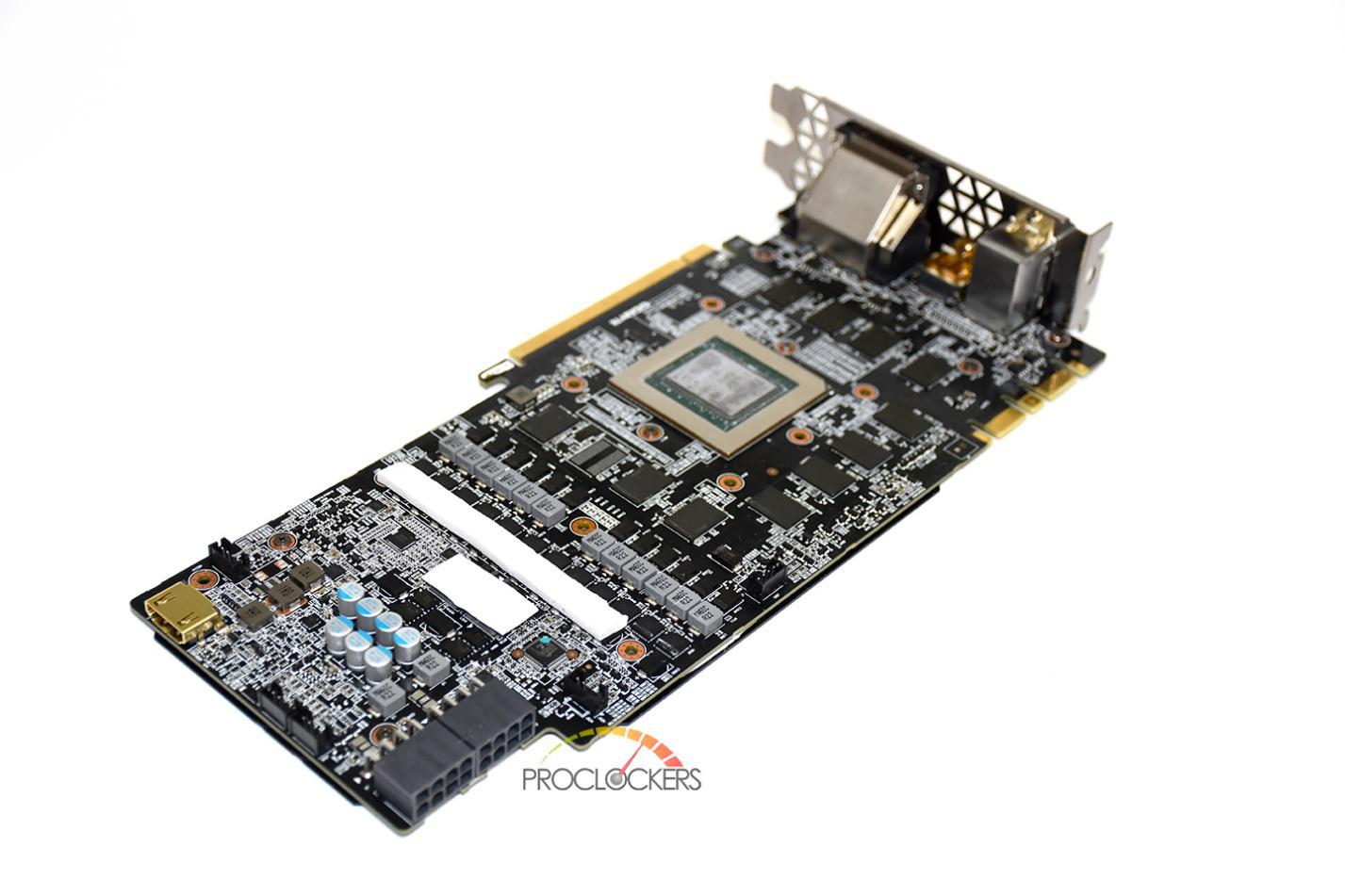
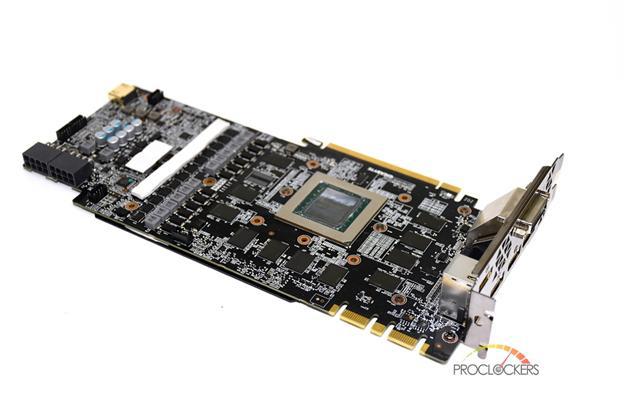
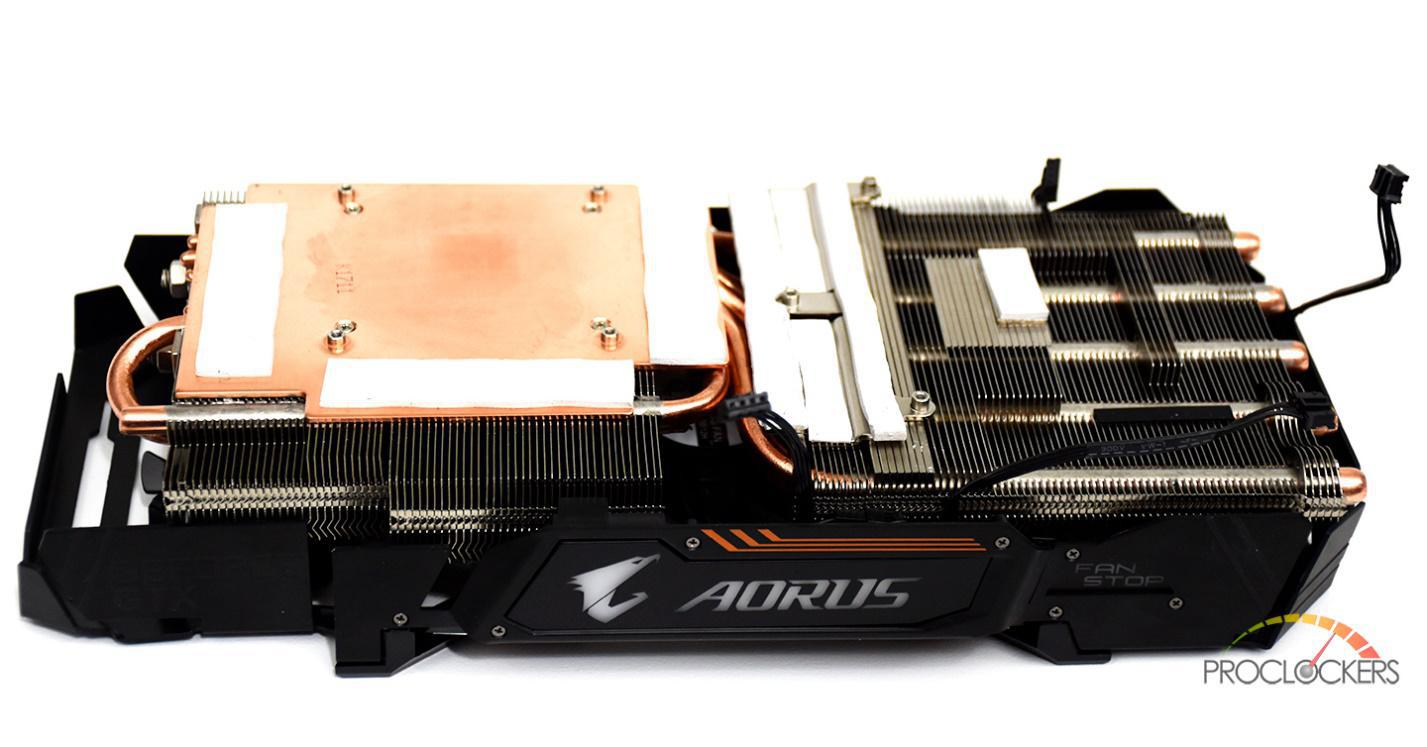
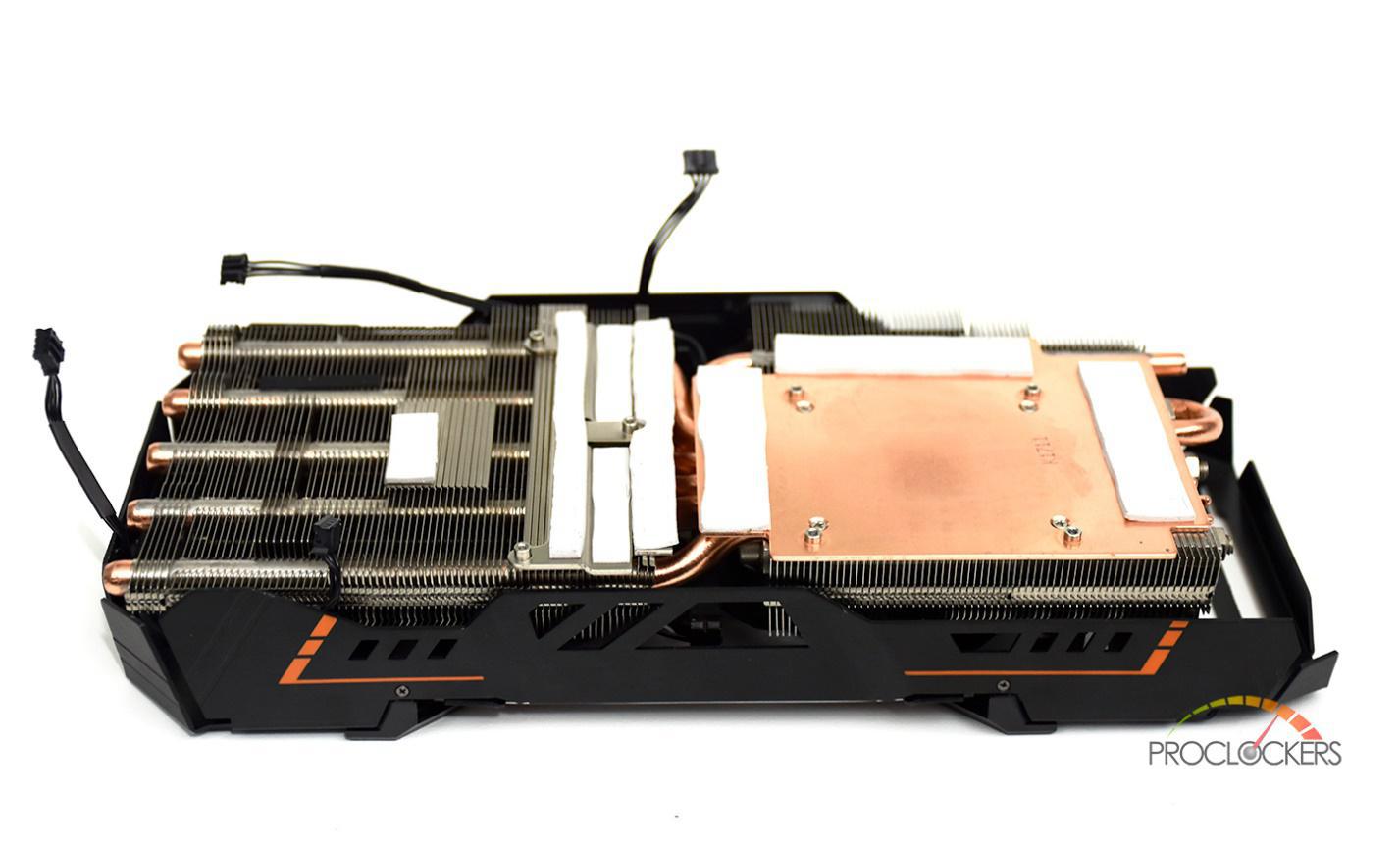
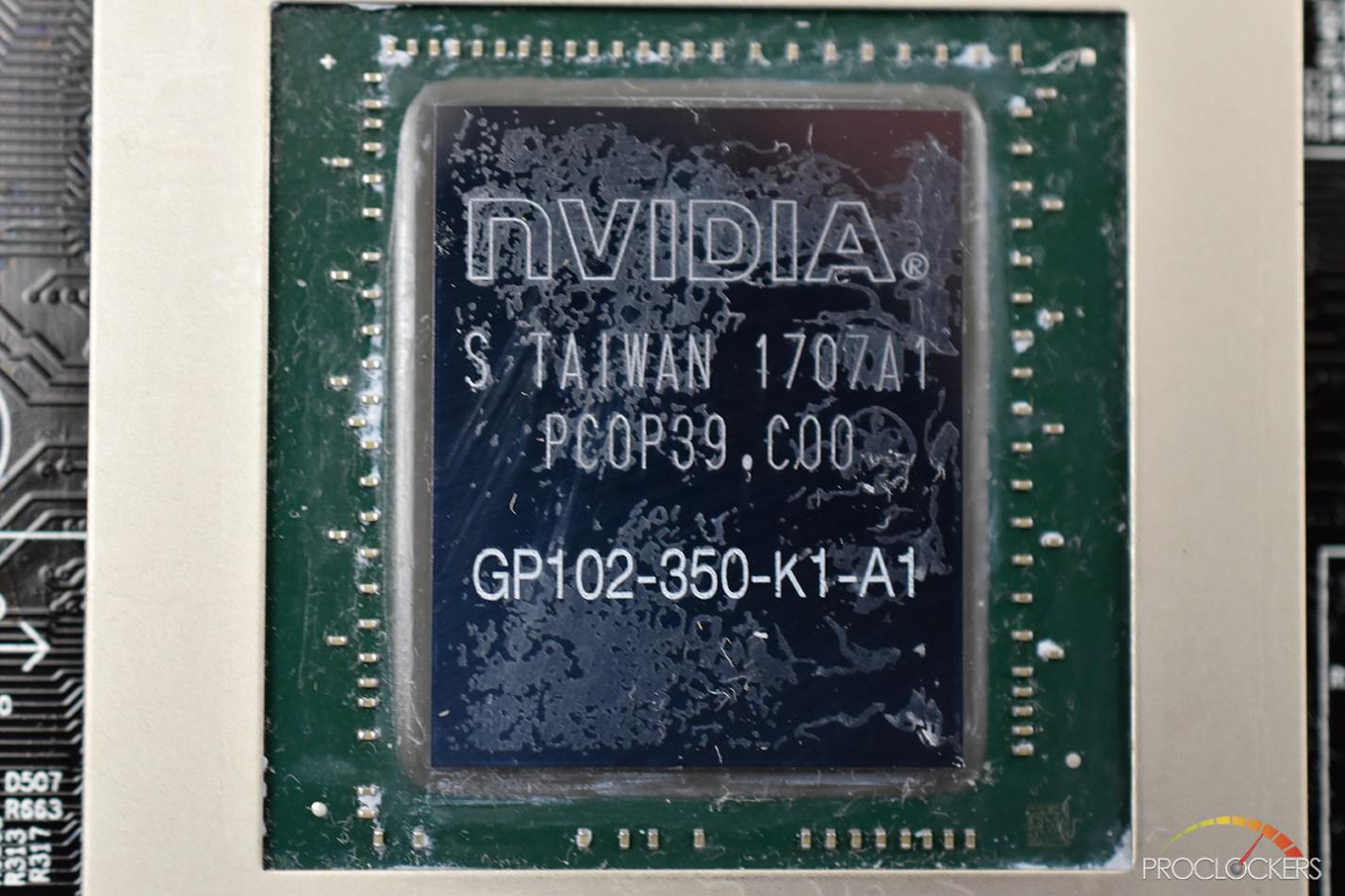
A close up of the GeForce Pascal, or GP-102 GPU, at the heart of the AORUS GTX 1080 Ti.
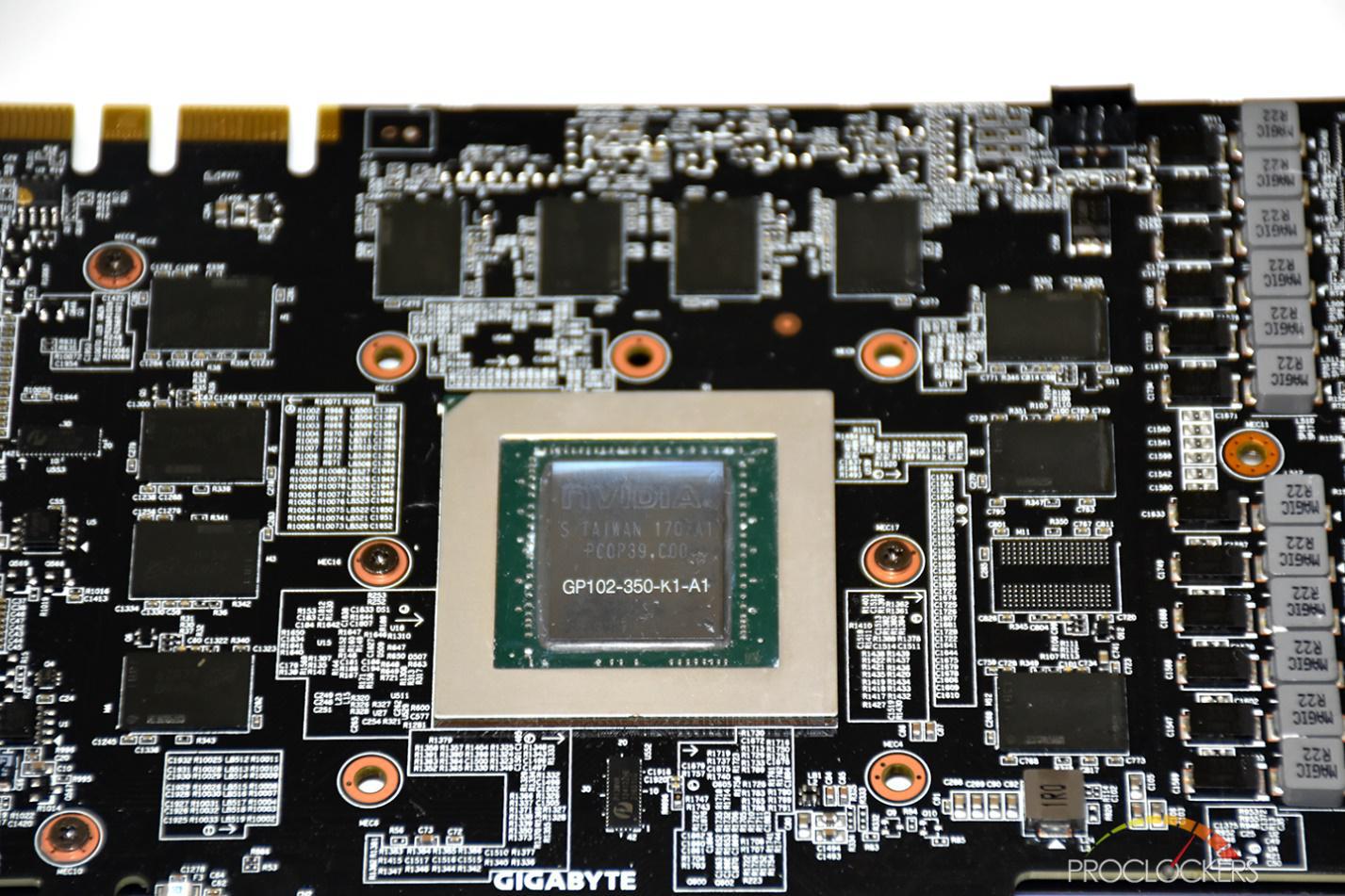
The GP-102 GPU on the 1080 Ti has 3584 Cuda Cores and 11 GB of GDDR5X running at 11 Gbps on a 352 bit memory bus.
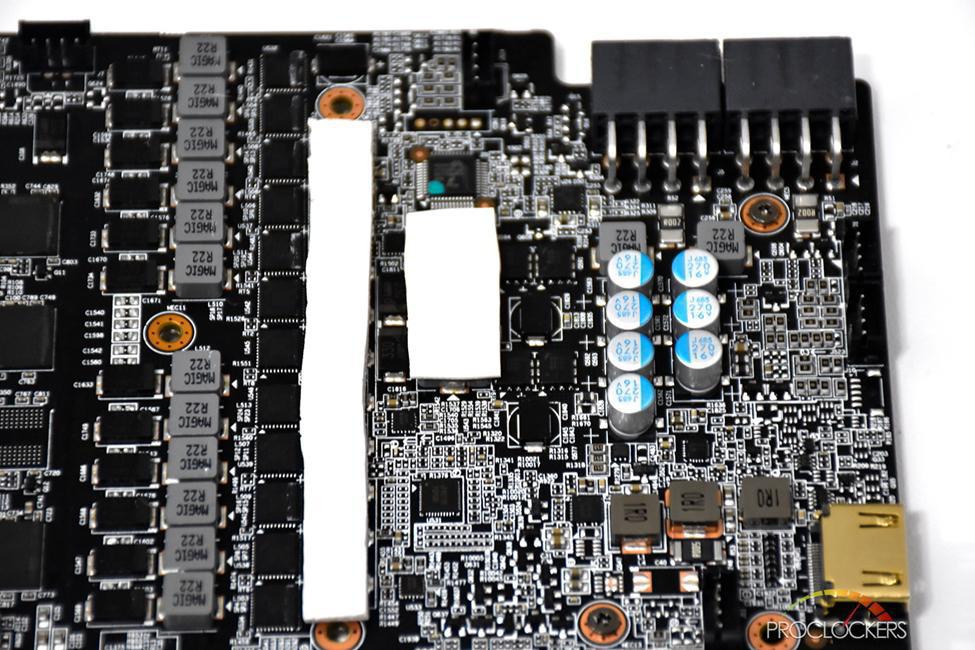
The AORUS XTREME EDITION 1080 Ti has 12 + 2 power phases.
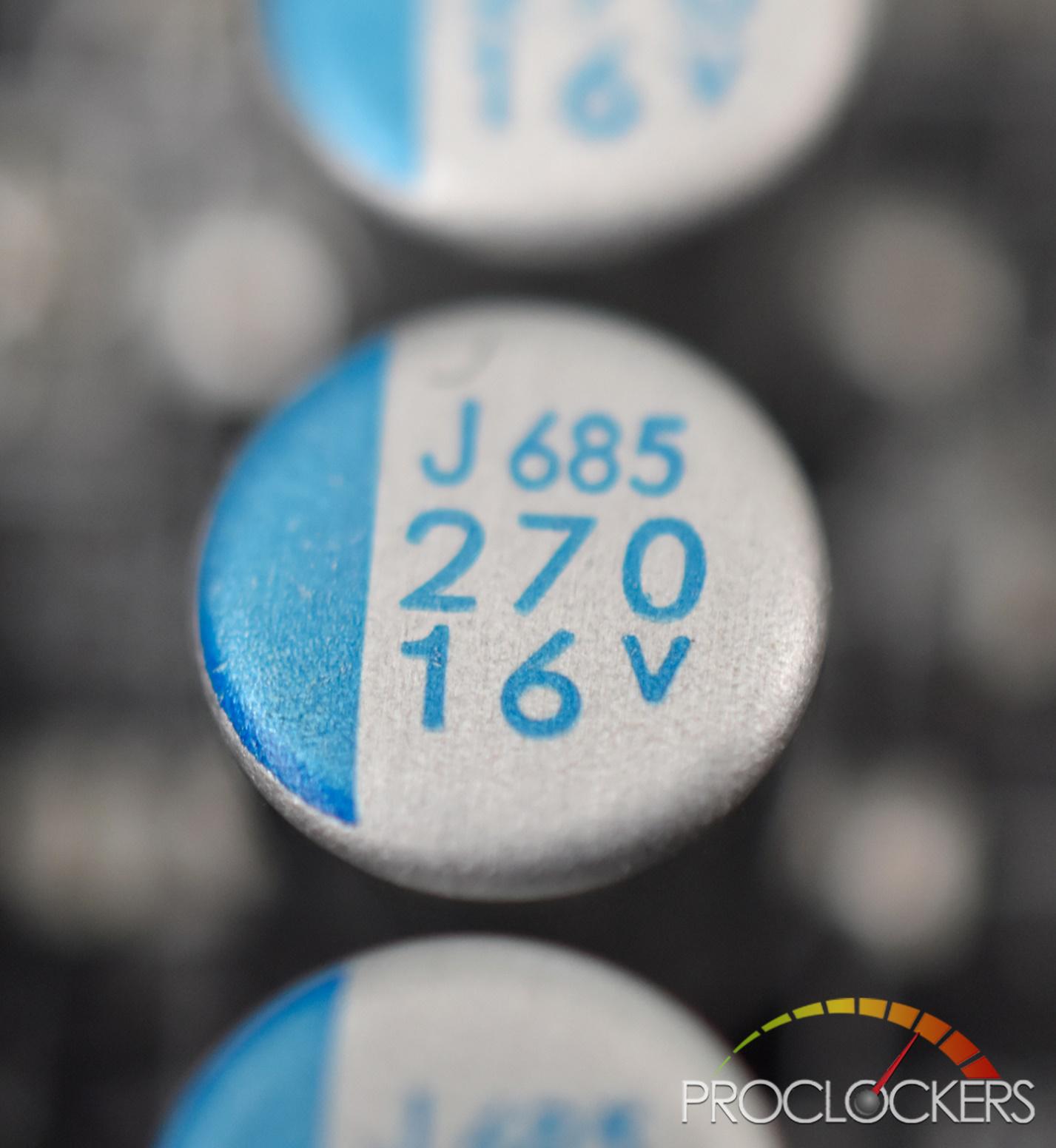
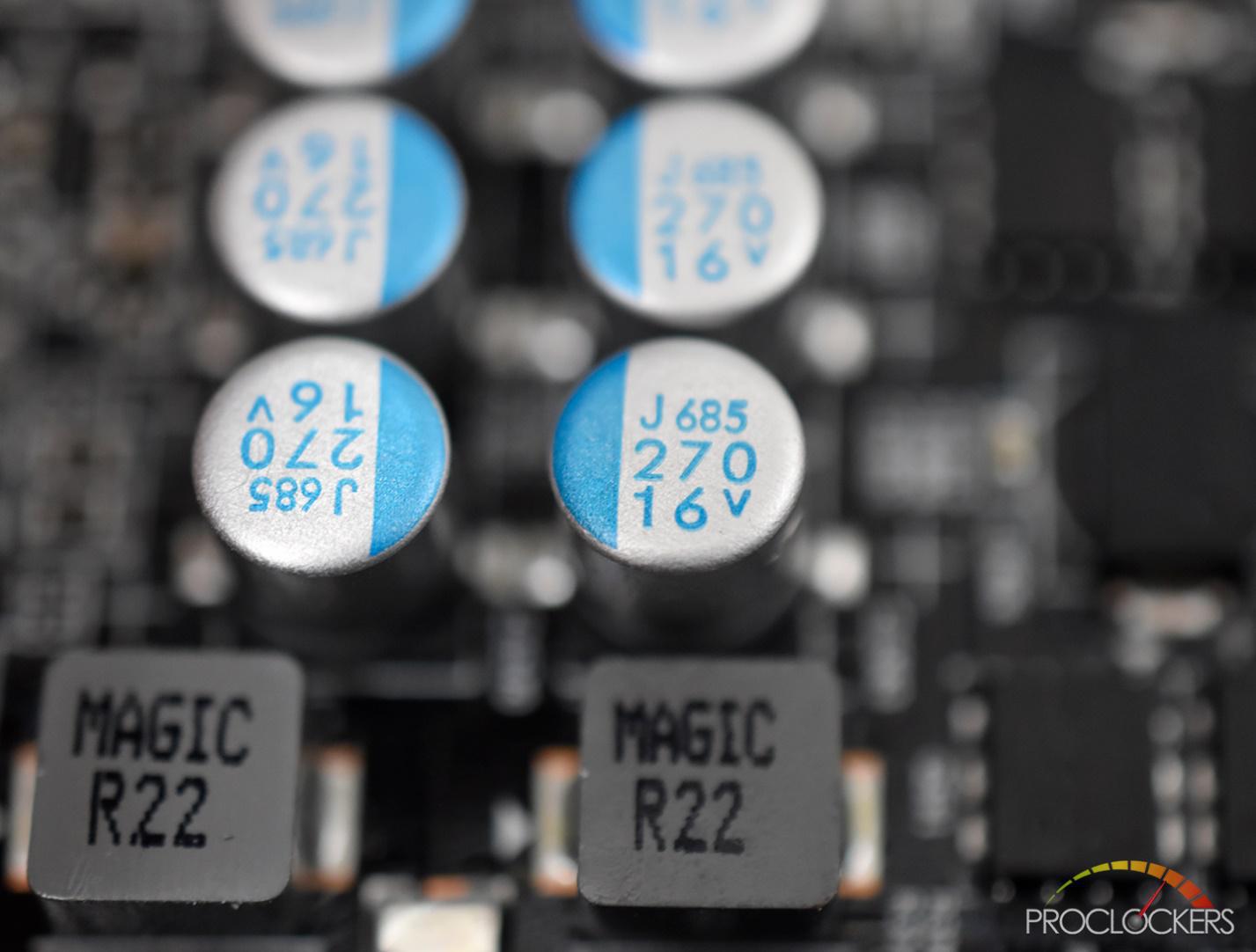


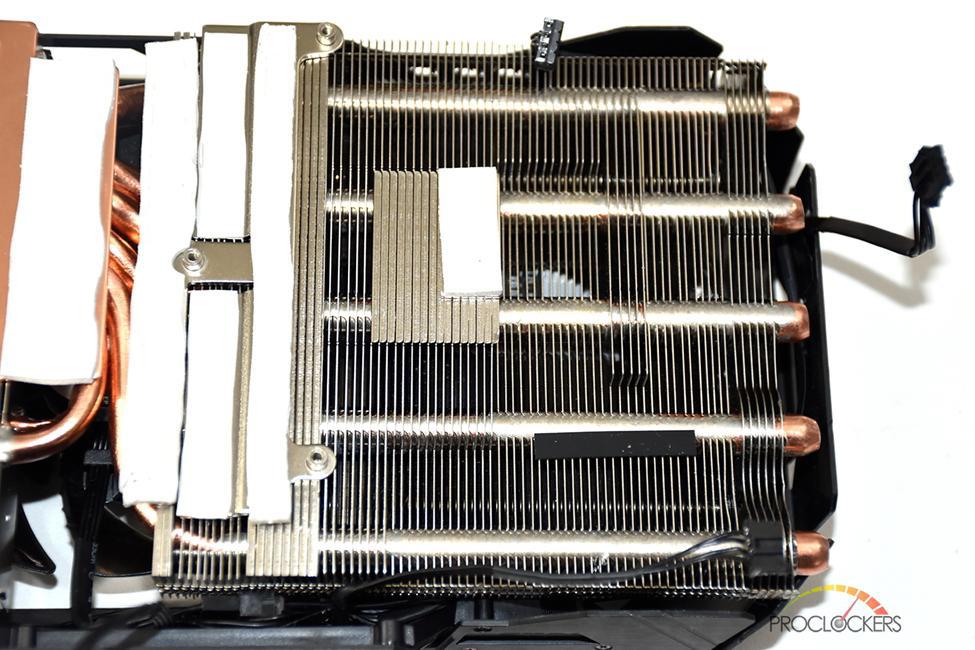
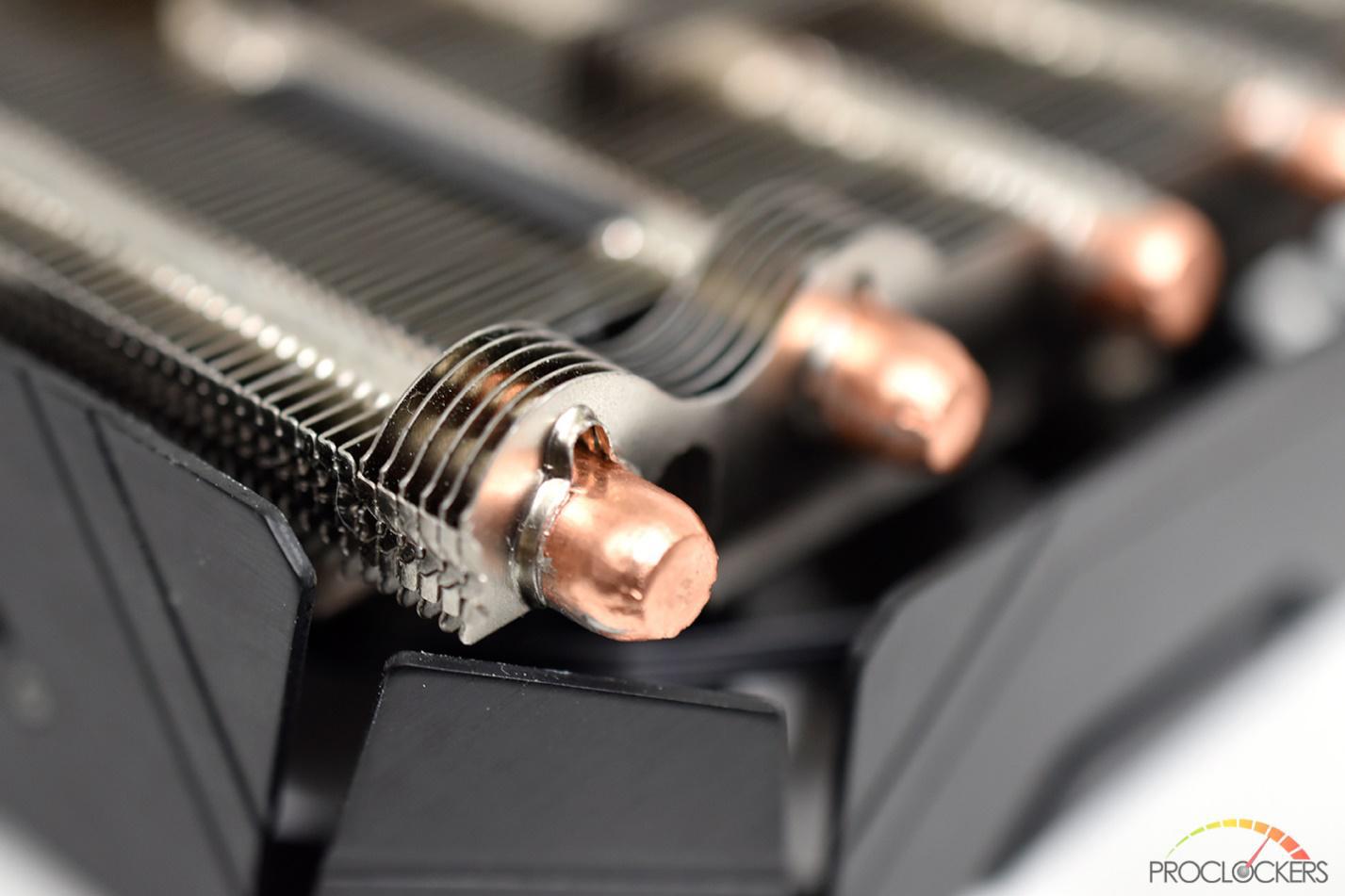
The cooler on the AORUS 1080 it is made up of Composite Heatpipes. The composite heat-pipes combines both thermal conductivity and phase transition for better managing the transfer of heat. This increases overall cooling capacity by up to 29%.
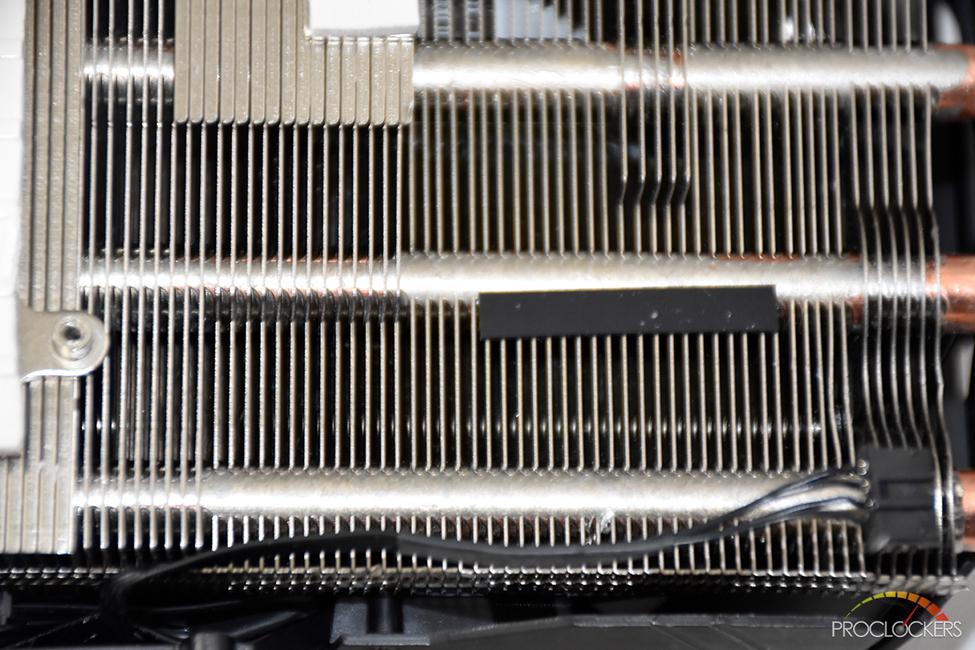
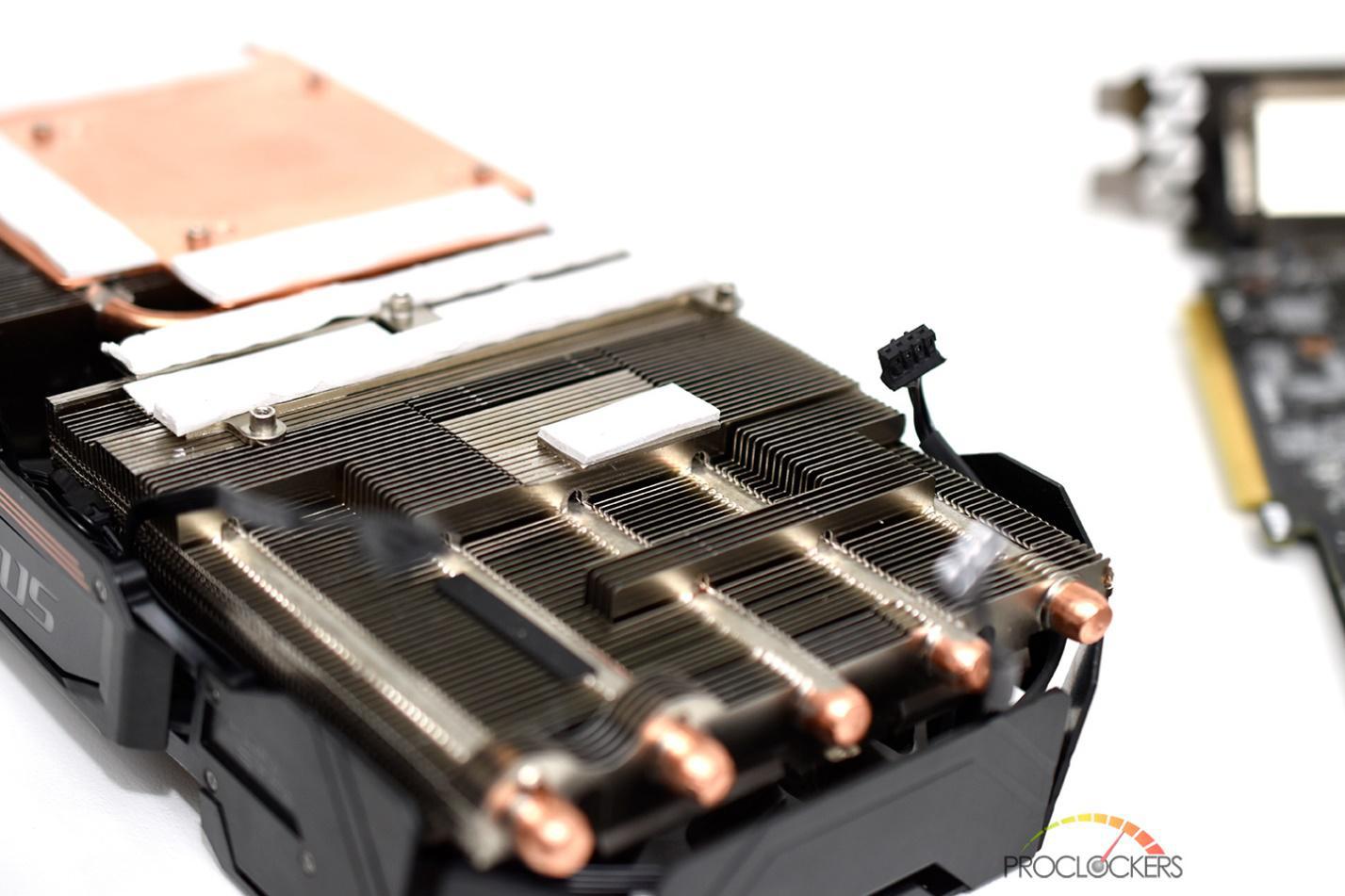
The heat sink sits at different heights, at different spots. This is to ensure maximum contact with the PCB and its components. This will help to better cool the card.
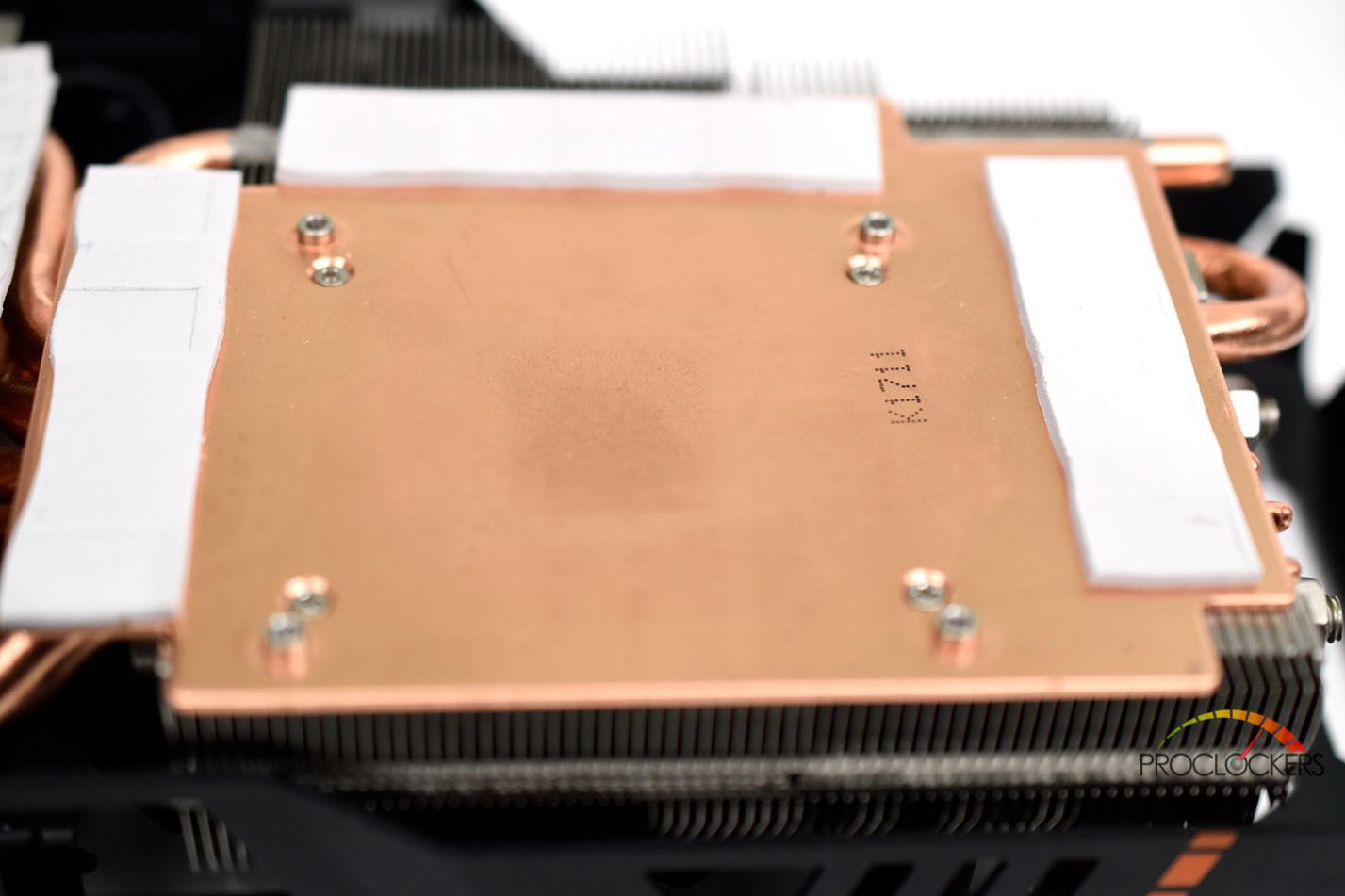
The large copper base plate makes contact with both the GPU and Memory.

The thermal pads on the PCB are very thick.
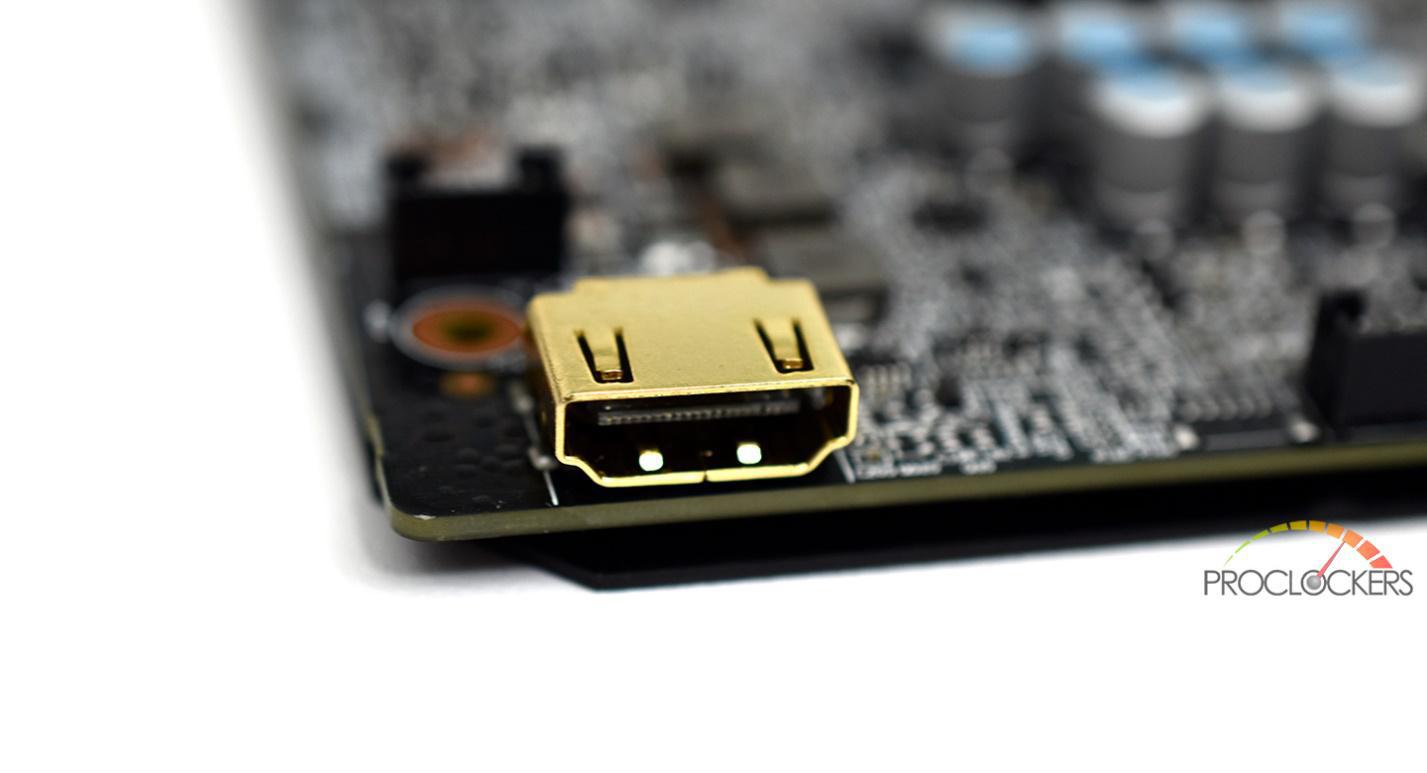
The rear of the card has an extra HDMI port for use with a VR headset and or GIGABYTE’s VR LINK.
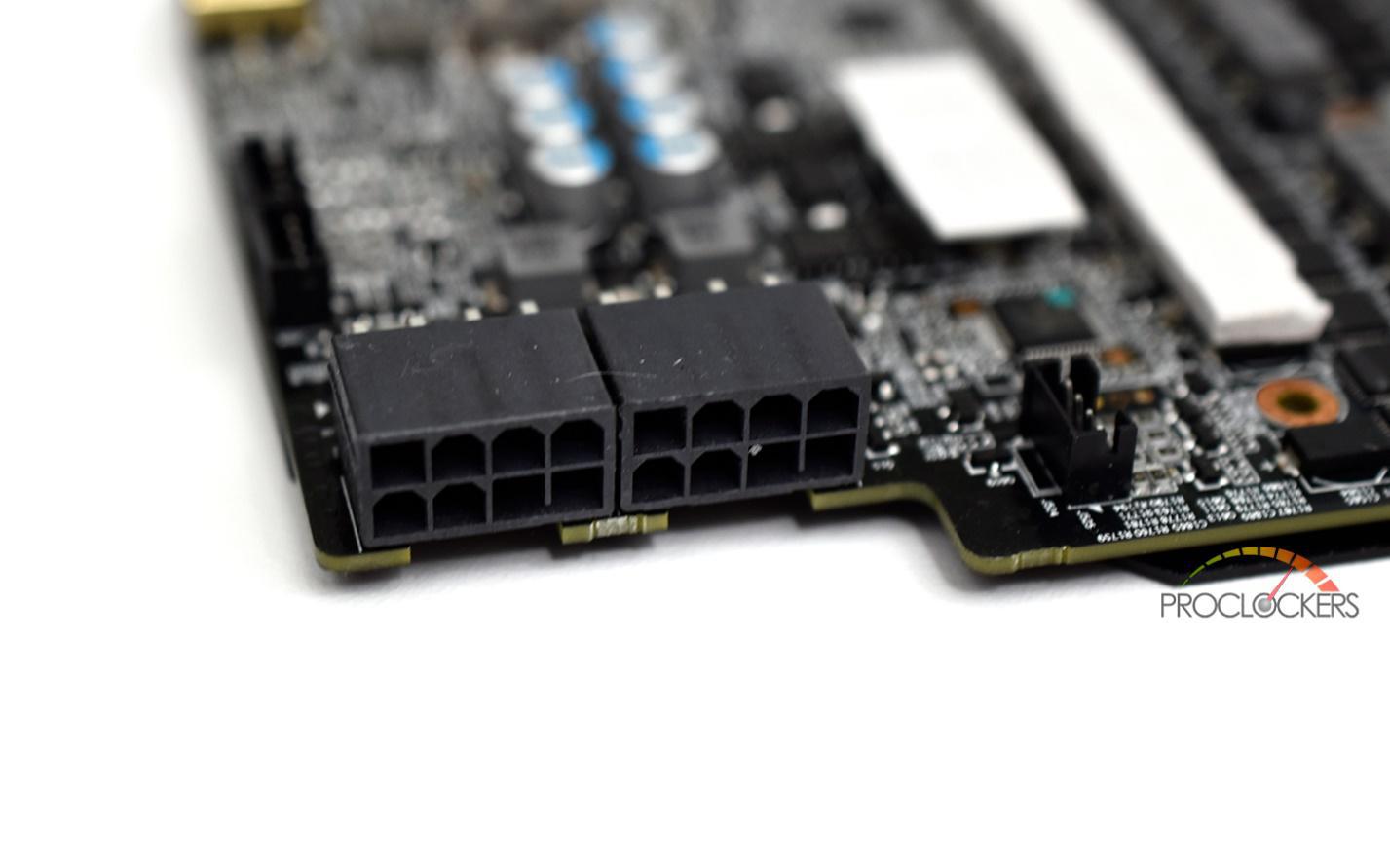
The card has 2 x 8-pin connectors.

The angular and unequal fins height does not only channel the airflow through the fins and enlarge the contact surface but also results in a lower noise level and better cooling capacity.
High Bandwidth (HB) SLI Bridge
The HB SLI bridge uses 2 SLI fingers on the PCB of each card and essentially doubles the available bandwidth between them. Only NVIDIA’s 10 series cards support HB SLI. Also, officially only 2-way SLI is supported and HB SLI runs at 650 MHz, while legacy SLI interface runs at slower 400 MHz.
Electrically there is little difference between the regular SLI bridge and the SLI HB bridge. It is like two regular bridges combined in one PCB. The signal quality of the bridge is improved, however, as the HB SLI bridge has an adjusted trace-length to make sure all traces on the bridge have the same length. The older generation Pro SLI bridges can still be used for resolutions up to and including 4k. However, for resolutions beyond 4k a HB SLI bridge is required.
The AORUS SLI Bridge I used not only matched the cards, but can also be synced up with the cards and an AORUS motherboard. This can be done in either the RGB Fusion software, or the AORUS Graphics Engine.
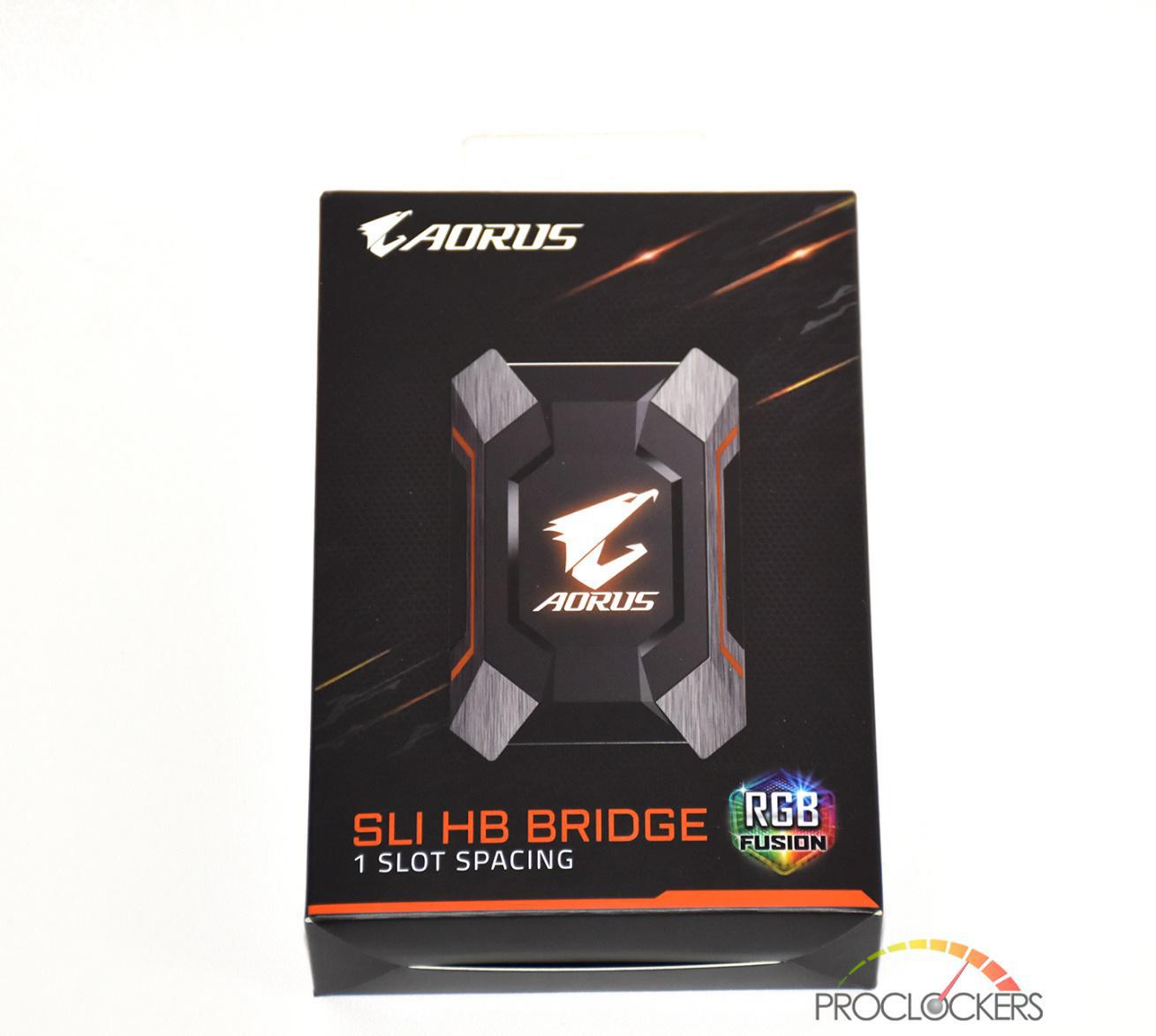
The front of the packaging for the AORUS HB SLI Bridge.

The rear of the package shows that this is a single slot bridge.
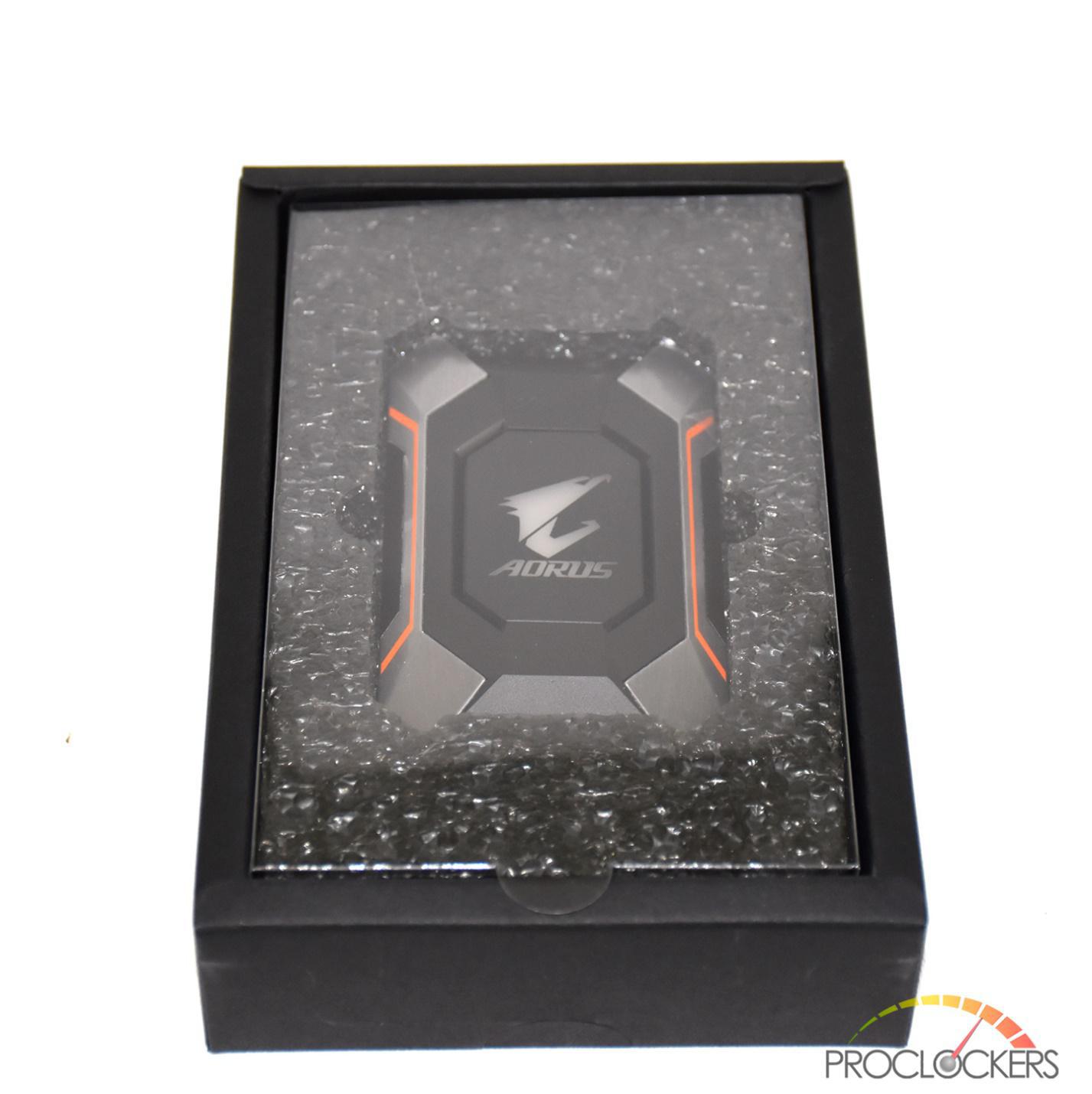
The bridge comes packed in soft foam and covered with protective plastic.
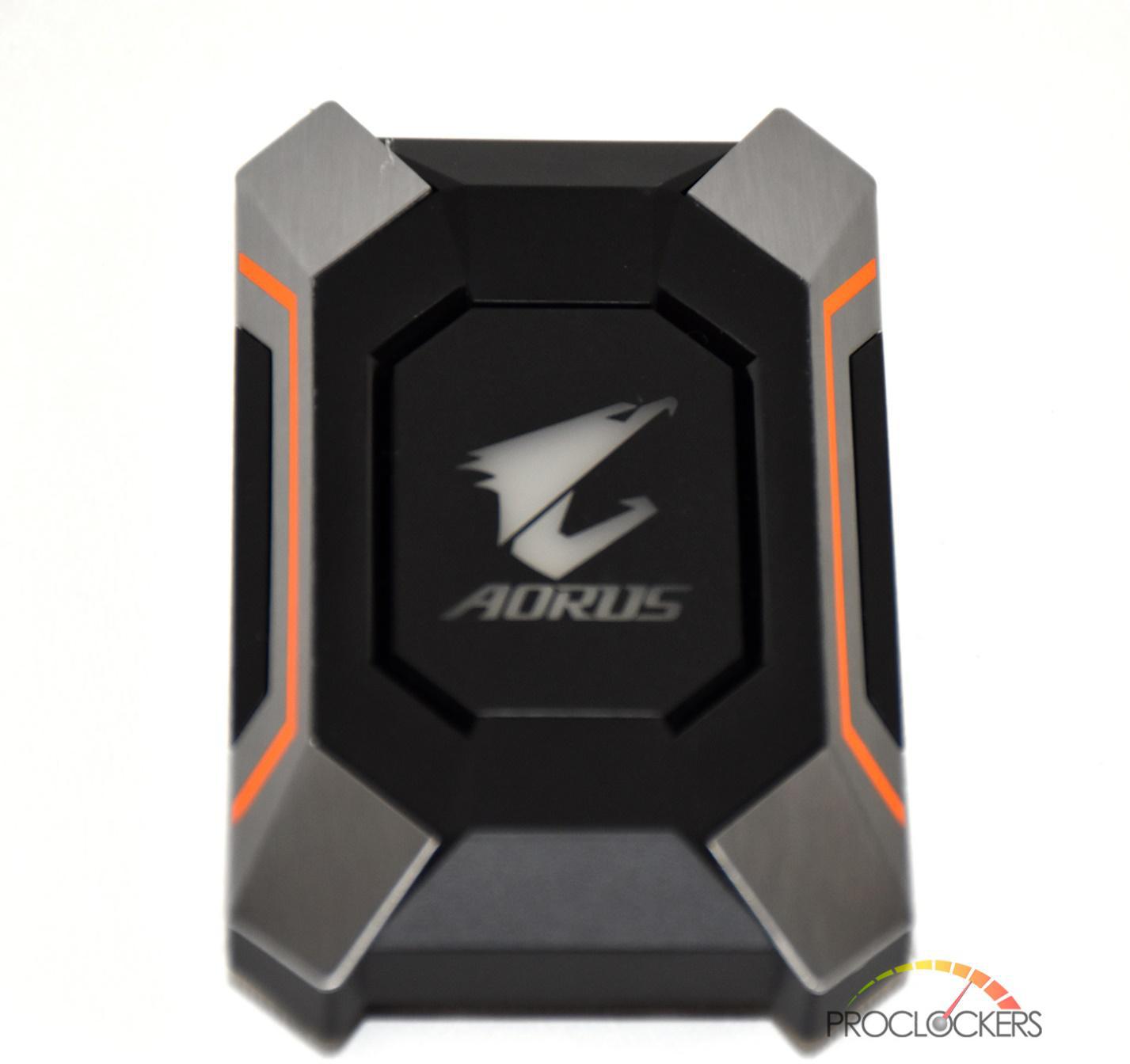
The AORUS SLI Bridge has RGB lighting with RB Fusion support and support for the AORUS GRAPHICS ENGINE.
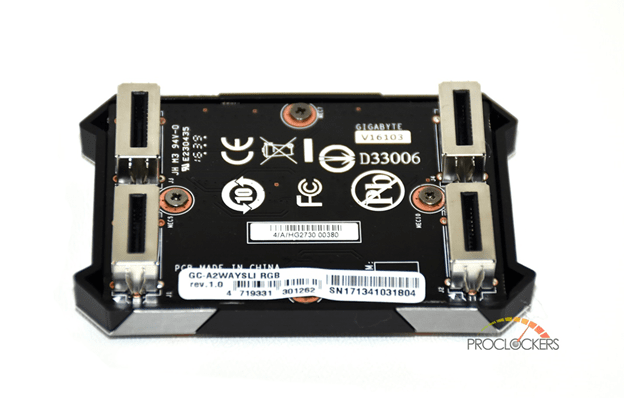
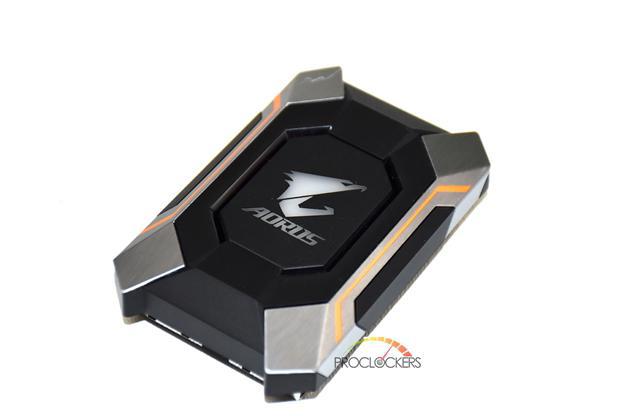
RGB Fusion
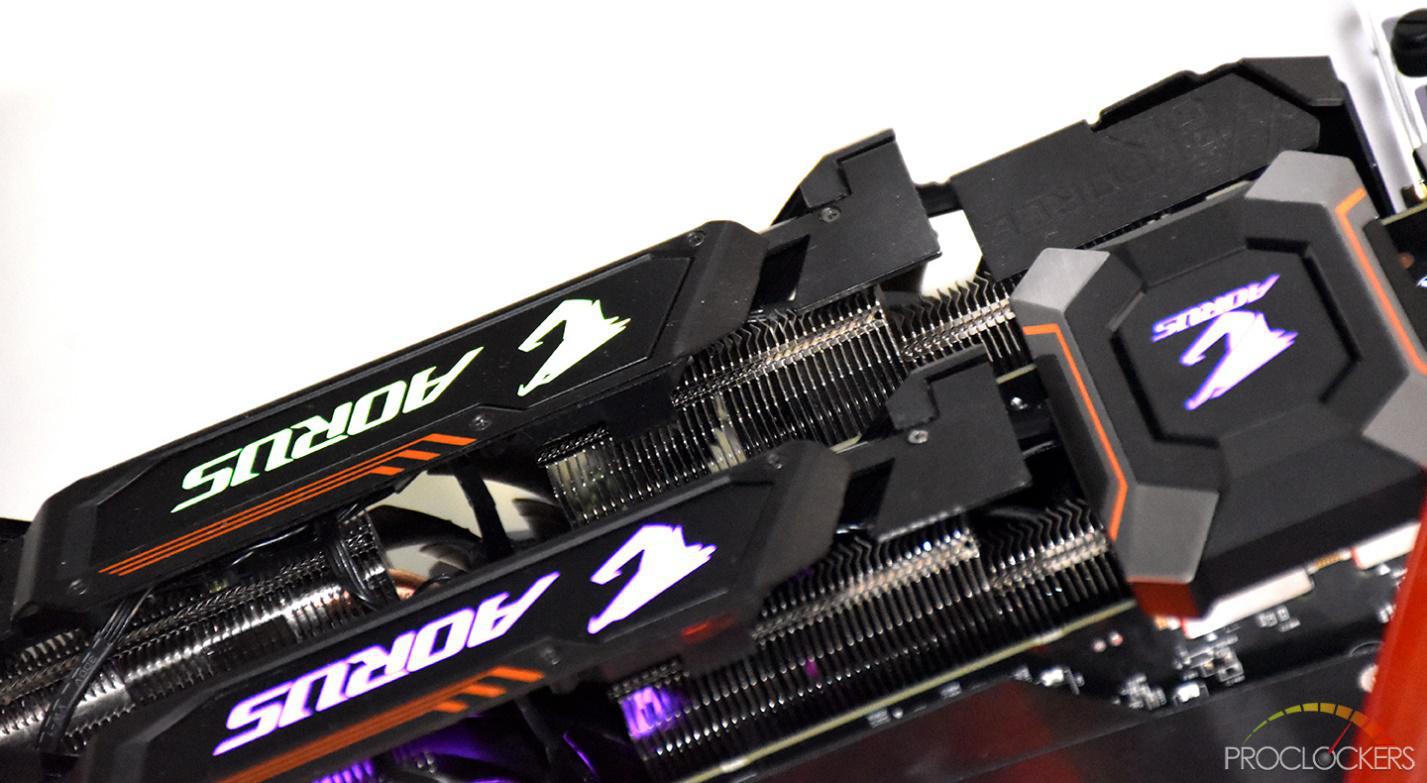
The RGB Fusion software can be downloaded from the GIGABYTE website. This software can control the lighting on GIGABYTE motherboards, GPUs, and peripherals. It can even control other RGB backlit peripherals, such as the G.Skill KM780R keyboard. There are two modes, basic and advanced. Lighting for AORUS graphics cards can also be controlled by the AORUS Graphics Engine.
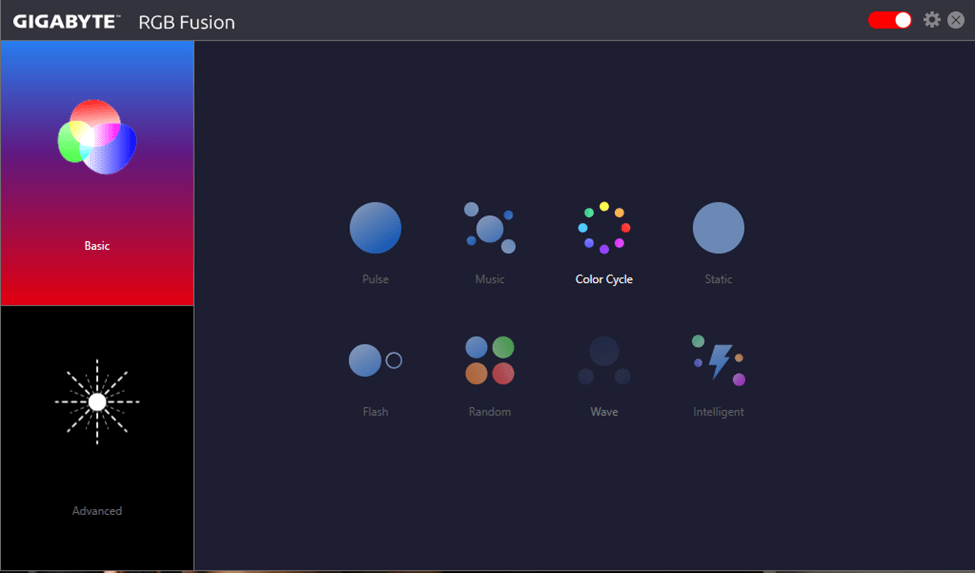
Basic mode has 8 preset modes: Pulse, Music, Color Cycle, Static, Flash, Random, Wave, and Intelligent.
In advanced mode, you can set each RGB zone to a different color and style.
Also in advanced mode, you can set the RGB lighting on any peripheral, cooler, case, RAM, or any other RGB backlit item the RGB Fusion software supports.
Testing & Performance
CPU-Z
CPU-Z is used to validate CPU clock speeds. The 7700k that was used in testing was running at 5.0 GHz.
GPU-Z
GPU-Z is used to validate GPU clock speeds and voltage.
As in all benchmarks, I do my absolute best to keep all testing fair and as equal as possible. The ambient temperature was a mild 22°C, or 72°F. The i7 7700k was run at 5.0 GHz @ 1.296 volts. The AORUS XTREME Edition 1080 Ti was kept at its stock speed in OC mode, at 1746 MHz for all benchmarks. The only exception being 3DMark Time Spy and Fire Strike. These benchmarks were both run at stock speeds and overclocked to as far as the XTREME Gaming Engine would allow it to go. With +79 on the core clock, +5 on the voltage, +150 on the memory, I set the temperature limit to 88°C and the power draw as high as it was allowed. In this case, +150, or 150% on the power draw. For the synthetic benchmarks, I tested OpenGL and DirectX 11. DX12 still hasn’t been widely adopted enough for there to be enough games to test with it. For the Gaming benchmarks, the games were run in 1920 x 1080p, 2560 x 1440p, and 3840 x 2160p. We also tested on a 3440 x 1440p ultra-wide. We use only full release drivers and software, meaning no beta drivers were used as they are usually not 100% stable. I used Windows 10 Professional due to it being the most recent operating system, as well as having DX12 support. All games were run on the highest possible settings, with no MSAA or AA of any kind in the 4k results. The GPU was set to its stock clock speeds. For GTA V, I’ve included a screen capture of the Advanced Graphics settings.
Cinebench
Cinebench is a synthetic benchmark that evaluates your computer’s performance capabilities. It’s based on MAXON’s animation software, Cinema 4D, which is used by studios and production houses worldwide for 3D content creation. I ran all aspects of Cinebench. First was their OpenGL GPU test in which the AORUS XTREME Edition 1080 Ti scored 151.84 fps. Second was the CPU test. This test maxes the CPU to 100% and tests its rendering capability. My i7 7700k scored an impressive 1057 CB on this run, with a single core performance of 214 cb. This is one of the better overall and single thread score I’ve ever achieved with a quad core with hyperthreading.
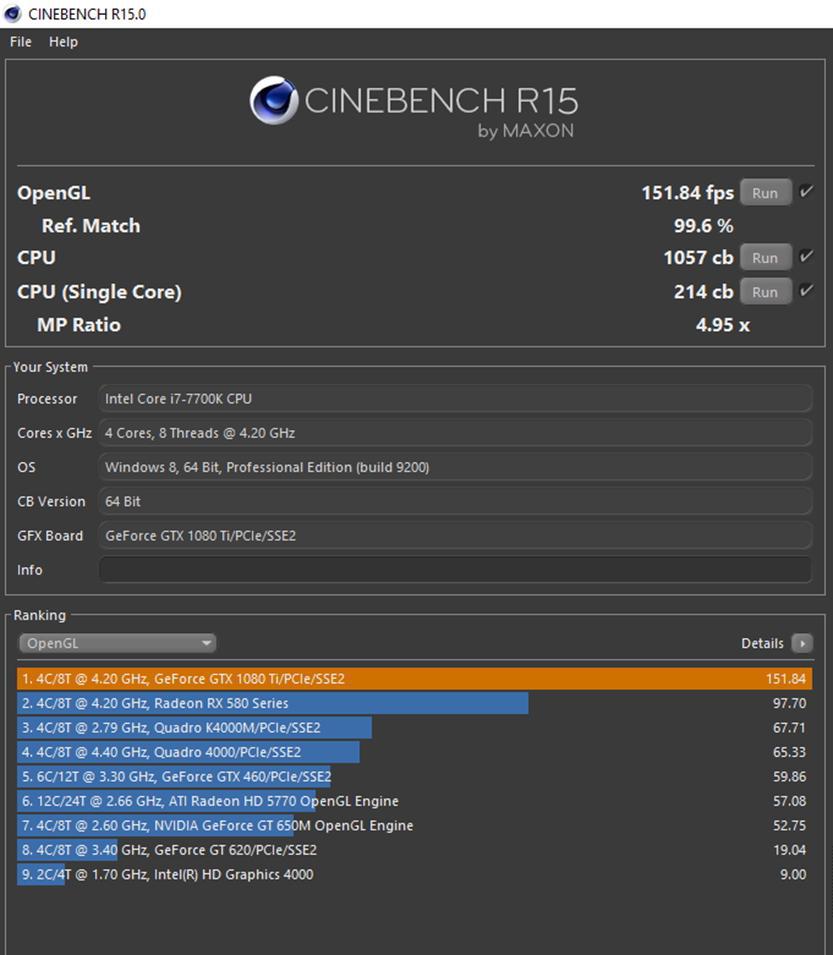
Unigine Heaven
The Heaven Benchmark is a DirectX 11 benchmark designed to stress your GPU under heavy loads. The Heaven Benchmark can be used to determine the stability of a GPU under extremely stressful conditions. I ran the Heaven Benchmark with the AORUS XTRME Edition 1080 Ti on a custom Preset, Ultra Quality, Extreme Tessellation, AA X8, in 1080p using the DX11 API. With these settings, the AORUS XTREME Edition 1080 Ti received an overall score of 3797 with an average FPS of 150.7, a minimum of 44.2 FPS, and a maximum of 322.8 FPS. Since I had 2 AORUS GTX 1080 Ti’s, I also ran SLI benchmarks. With 2 cards running, the AORUS XTREME Edition 1080 Ti received an overall score of 5546 with an average FPS of 220.2, a minimum or 40.7 FPS, and a maximum of 409.9 FPS.
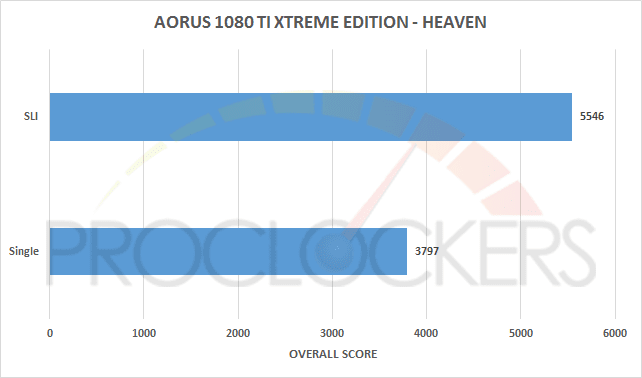
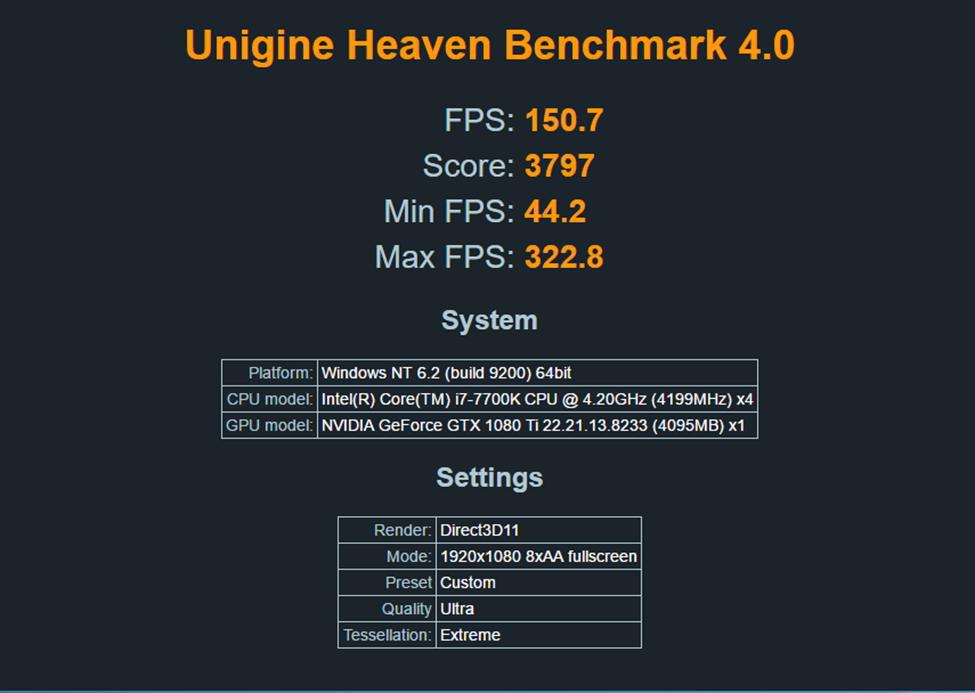
SINGLE CARD SCORE
SLI SCORE
3DMARK
3DMark is a computer benchmarking tool created and developed by Futuremark used to determine the performance of a computer’s 3D graphic rendering and CPU workload processing capabilities. It does this through a series of graphics, physics, and/or CPU tests. I used 3DMark’s most popular benchmark, Fire Strike as well as their newest DX12 benchmark, Time Spy to test the AORUS XTREME Edition 1080 Ti. The card was tested at both stock and overclocked to +134 on the core and +180 on the memory. Using the XTREME Graphics Engine from GIGABYTE, I ran both Fire Strike and the new DX12 benchmark, Time Spy. Here are the results.
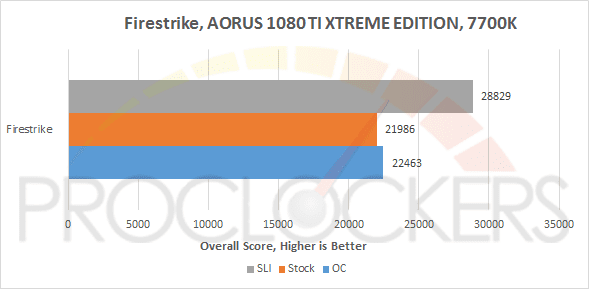
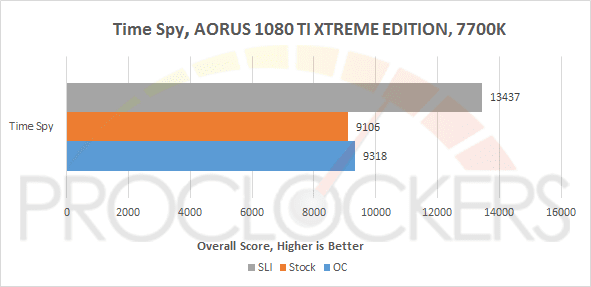
Gaming Results
Games
- Battlefield 1
- Crysis 3
- Grand Theft Auto V
- Rise of the Tomb Raider
- Shadow of Mordor
- Thief
- Watch Dogs 2
- The Witcher 3
I tested the usual games I test, and I added a new title, Battlefield 1. Released in October 2016, Battlefield 1 has DX12 support and is a beautiful game. The rest of the games are a mix of older and newer titles, with no games older than 2013 and Crysis 3 being the oldest of the titles. However, Crysis is 3 still one of the most graphically demanding games on the market. Grand Theft Auto V didn’t hit PC until 2015 and has one of the most extensive graphics menus I’ve ever seen. Shadow of Mordor is a 2014 title, but still a very demanding game, especially when the 4k texture pack is installed. Thief is another 2014 title, but it’s still a beautiful and rather demanding game. I’ve replaced the Tomb Raider reboot with its sequel, Rise of the Tomb Raider. Also, the Witcher 3 and Watch Dogs 2 were also tested. They were benchmarked in 1080p, 1440p, 4k and with my recent purchase of an ultra-wide monitor, I started benchmarking games in 3440 x 1440p. All games were played at their max settings with 4x MSAA. Each benchmark run was timed at 120 seconds, ran 3 times each, and averaged out to get the overall results. I have also included a screenshot of the advanced graphics settings for GTA V.
Game Testing
There were 8 games tested. A mix of newer titles and a few older ones were run through our tests, but none older than 2013. They were tested in 1080p, 1440p, 3440 x 1440 and 4k. All games were played at their max settings. Each benchmark run was timed at 120 seconds, ran three times each, then averaged out to get our final results. The games are as listed.
- Battlefield 1
- Crysis 3
- Grand Theft Auto 5
- Rise of the Tomb Raider
- Shadow of Mordor
- Thief
- Watch Dogs 2
- The Witcher 3

Here is the screenshot from GTA V Advanced Graphics screen we promised.
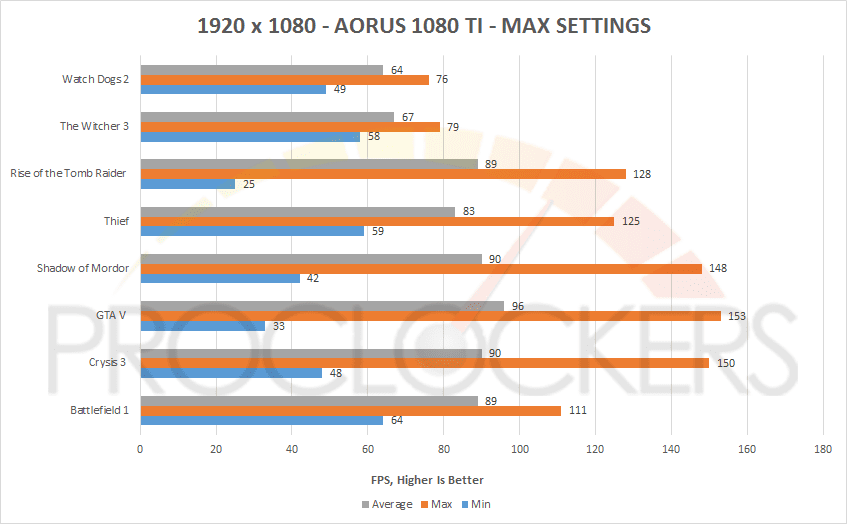
This card is overkill at 1080p, even with one card. All games averaged over 60 FPS. All but 2 games, The Witcher 3 and Watch Dogs 2, averaged into the 80’s or 90’s. Watch Dogs 2 was the lowest on a single card with 64 FPS.

Watch Dogs 2 was also the lowest in SLI at 1080p with 93 fps.
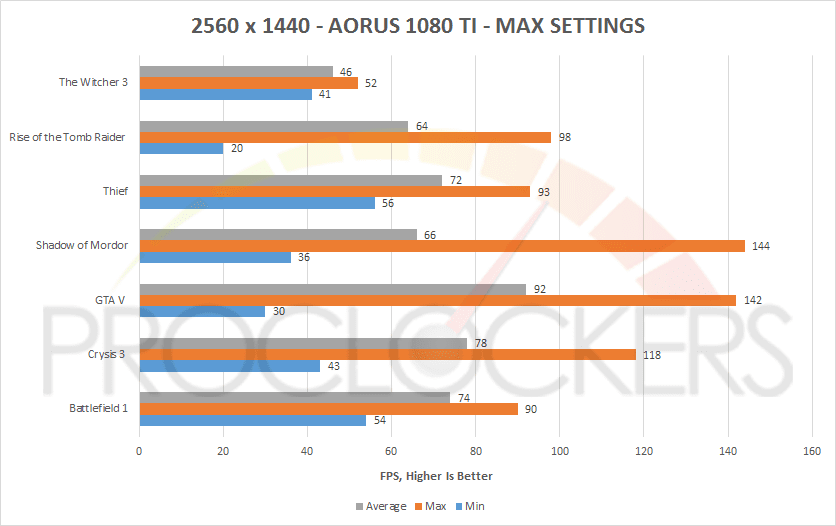
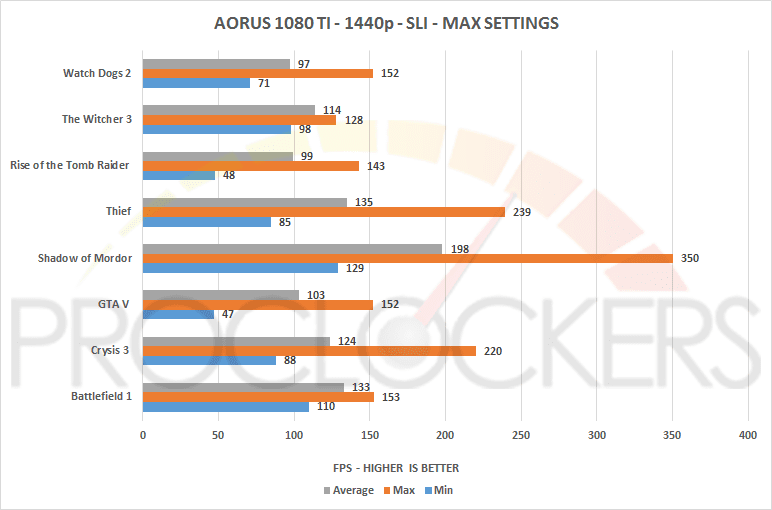
In 1440p, the AORUS GTX 1080 Ti did great, especially with 2 cards. Watch Dogs 2, which is the most demanding game in my suite, averaged 46 FPS on max settings on a single card. However, in SLI, it averaged 97 FPS on the same settings. That is more than double the frames in SLI. However, that is only 4 FPS more than at 1080p.
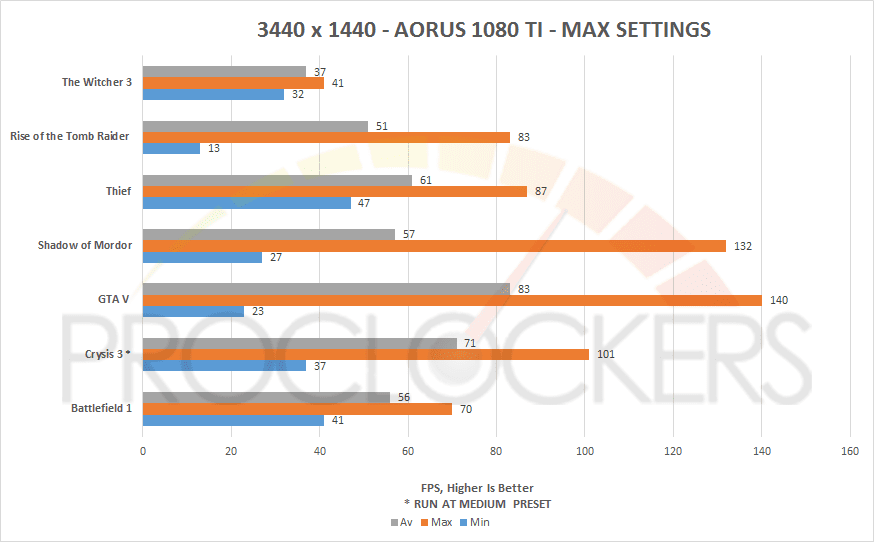
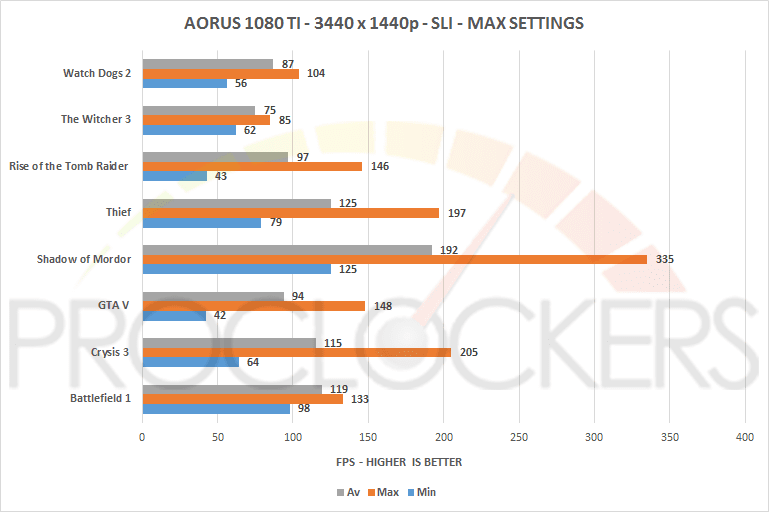
The AORUS GTX 1080 Ti did very well on a single card on my ultrawide at 3440 x 1440p. In SLI, the AORUS GTX 1080 Ti dominated this resolution.
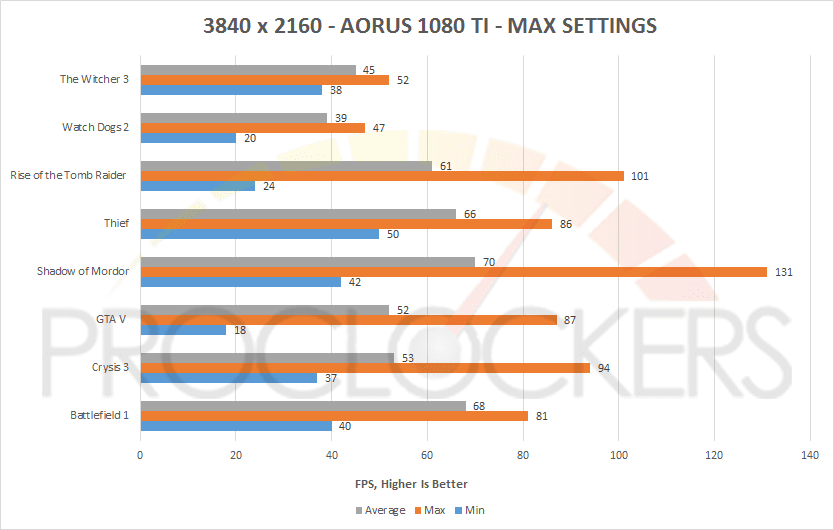

As the results show, SLI makes little to no difference, even in 4k, in Battlefield 1. However, in the Witcher 3, it almost doubled the FPS. The Witcher 3 went from 45 FPS on a single card, to 85 fps on 2.
I used games that tend to be more graphically demanding. For example, Crysis 3. Even though it was released in 2013, it is still to this day, one of the most graphically demanding games on the market. Not to mention, one of the most beautiful games and one of the most popular games to benchmark. Shadow of Mordor is also a gorgeous game. Especially with the 4k textures pack added, this game is still demanding. However, it’s beginning to show its age. Once the sequel is released, I’ll replace it in the suite of games I test. Grand Theft Auto 5 is one of the most successful games ever. At launch on PC, it was one of the most well optimized games with a massive array of graphics options, including over 25 separate customizable graphics settings. Rise of the Tomb Raider is the sequel to the very successful 2013 reboot of the franchise. Thief was yet another excellent reboot to a classic franchise. Thief is one of the most optimized games in my suite. It’s steampunk dystopian city is one of the most beautiful cities I’ve ever explored in a game. It’s beauty is only matched by how graphically demanding it is. It’s personally my favorite game that I test. The Witcher 3 is one of the most beautiful games I’ve ever played in and puts a beating on your GPU. Battlefield 1 is the newest game in the Battlefield franchise and looks amazing. Surprisingly, Watch Dogs 2 was the most demanding game I tested as well as one of the newest. These are the games that all my graphics cards will be benchmarked with and I’ll add more as I pick up any newer titles and swap out the older ones.
Overclocking & Temperatures
The AORUS Graphics Engine
The AORUS Graphics Engine is a software that allows the user to overclock their AORUS graphics card and set the RGB lighting to their personal taste. There are 3 preset modes and a user mode where you can set your own clock speeds. The 3 preset modes are Silent Mode, Gaming Mode, and OC Mode. The clock speeds for each mode depend on the card in use. The AORUS GTX 1080 Ti has a clock speed of 1582 MHz in Silent Mode, 1721 MHz in Gaming Mode, and 1746 in OC Mode. With the RGB Fusion controls, you can set your AORUS graphics cards to sync up with your AORUS motherboard and the AORUS High Bandwidth SLI bridge.
With 16.8M customizable color options and numerous lighting effects, you could now choose the right scheme for your gaming rig through AORUS graphics engine.
I used the AORUS Graphics Engine for overclocking the AORUS GTX 1080 Ti, as well as for setting the RGB lighting on the cards, High Bandwidth SLI bridge, and on my AORUS Z270X Gaming 5 motherboard. The AORUS Graphics Engine has 3 preset modes and a user mode. The preset modes are Silent Mode, Gaming Mode, and OC mode. Silent mode has a boost clock of 1582 MHz. Gaming mode has a boost clock of 1721 MHZ, and OC Mode is set to 1746 MHz. In the user mode, you can set your own core clock, memory clock, voltage, power limit, fan speed (%), and temperature limit. In user mode, I got the clock speed up to 1800 MHz. However, with how GPU Boost 3.0 works, the AORUS GTX 1080 Ti boosted to 2025 MHz which is very good for a 1080 Ti. The card did seem a bit warm, maxing out at 72°C, but compared to the 77°C on my Founders Edition card, 72°C is much cooler. Also, in comparison, the Titan Xp ran at a toasty 83°C. This is thanks to the massive cooler on the AORUS GTX 1080 Ti. The card was relatively quiet too. On idle, it ran at about 30 decibels and while under a gaming load, it ran at about 40-45 decibels. Keep in mind that’s also on an open-air test bench 3 feet away from where I sit.
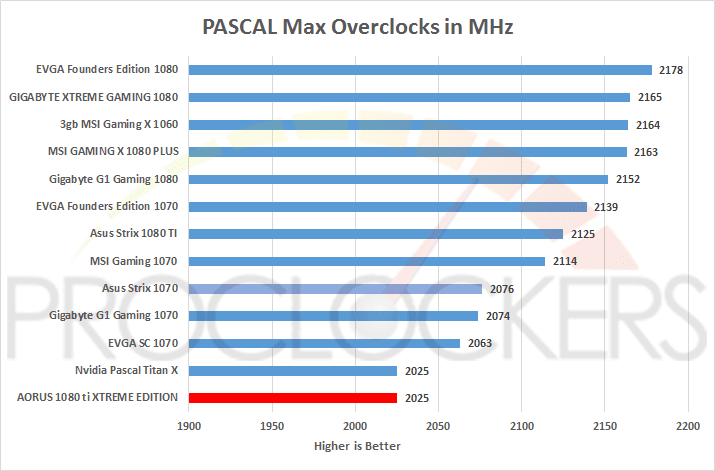
The 2025 MHz clock speed of the AORUS GTX 1080 Ti may seem low for a Pascal GPU. However, for a 1080 Ti, that’s very good. Especially when compared to one of the Founders Edition cards I tested only hit 1962 MHz.
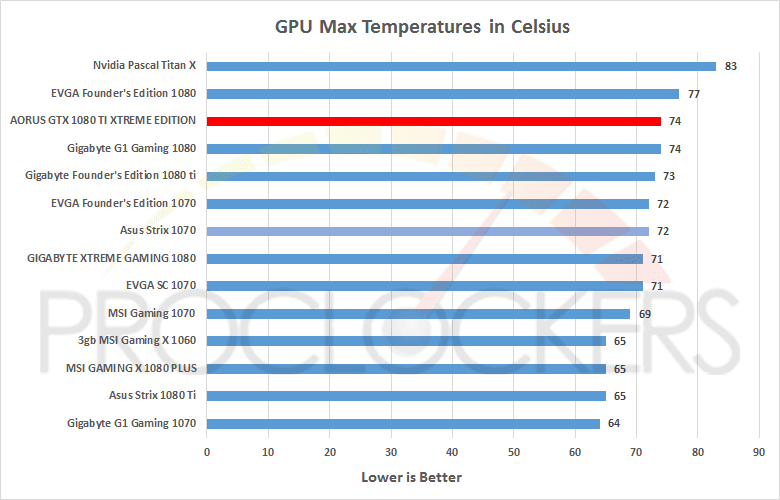
The AORUS GTX 1080 Ti performed 3°C cooler than the Founders Edition.
Final Thoughts & Conclusion

Being a 1080 Ti, we knew this card would do well. The question is: did it do well enough to justify its purchase over a Founders Edition or another board partner card? The short answer is yes, 100%. The AORUS GTX 1080 Ti XTREME Edition ran cooler than the Founders Edition by about 3°C. That may not sound like much, but it’s cooler nonetheless. The AORUS GTX 1080 Ti also runs relatively quiet. The card idled around 30 decibels and, under load, never went over 45 decibels.
The performance of this card was stellar, especially in SLI. Even in 4k, all the games tested stayed over 30 FPS on their max settings, some even over 60 FPS. In SLI, the AORUS GTX 1080 Ti absolutely dominated, even in 4k. It did show me that at lower resolutions like 1080p, this card in SLI gives little to no performance increase. However, in 4k, SLI almost doubled the frame rate in the Witcher 3 going from 45 FPS to 85 FPS in SLI and that is impressive to say the least. The core maxed out at 2025 MHz. For a 1080 Ti, that’s more on the higher-end for clock speeds. Most of the 1080 Ti cards I’ve tested sat around 2000 MHZ.
The RGB factor also adds to this card’s worth over the Founders Edition. The RGB lighting on the AORUS GTX 1080 Ti is subtle and looks great, especially when synced with an AORUS motherboard, a second card, and a High Bandwidth SLI Bridge. All the features and aesthetics of the AORUS GTX 1080 Ti XTREME EDITION add up to one amazing card well worth its asking price. At the time of writing this review, you can get the AORUS GTX 1080 Ti XTREME Edition on Newegg for only $749.99. That’s only $50 more than the Founders Edition, and it comes with a digital copy of Destiny 2 for PC (for a limited time only). However, if you want to save a few bucks, and give up a bit of RGB lighting, you can pick up the Standard AORUS GTX 1080 Ti, also on Newegg, for only $719.99. That’s only $20 more than the Founders Edition, and it too comes with a digital copy of Destiny 2. The performance and pricing of the AORUS GTX 1080 Ti has won it the Proclockers “Elite Hardware Award.” Whether it’s the Standard or the XTREME Edition, you just can’t go wrong with the AORUS GTX 1080 Ti from GIGABYTE.
Standard Edition
XTREME EDITION







